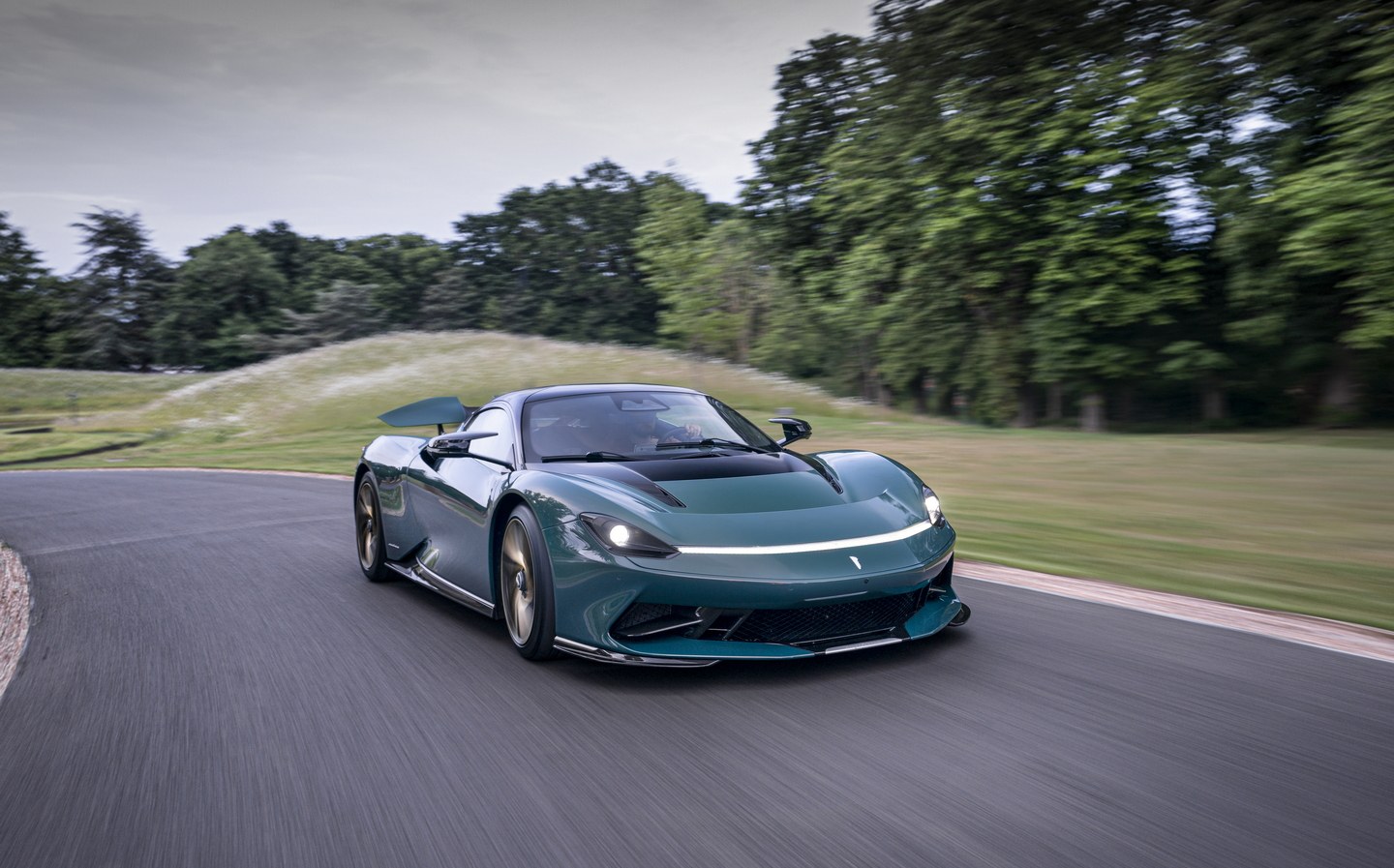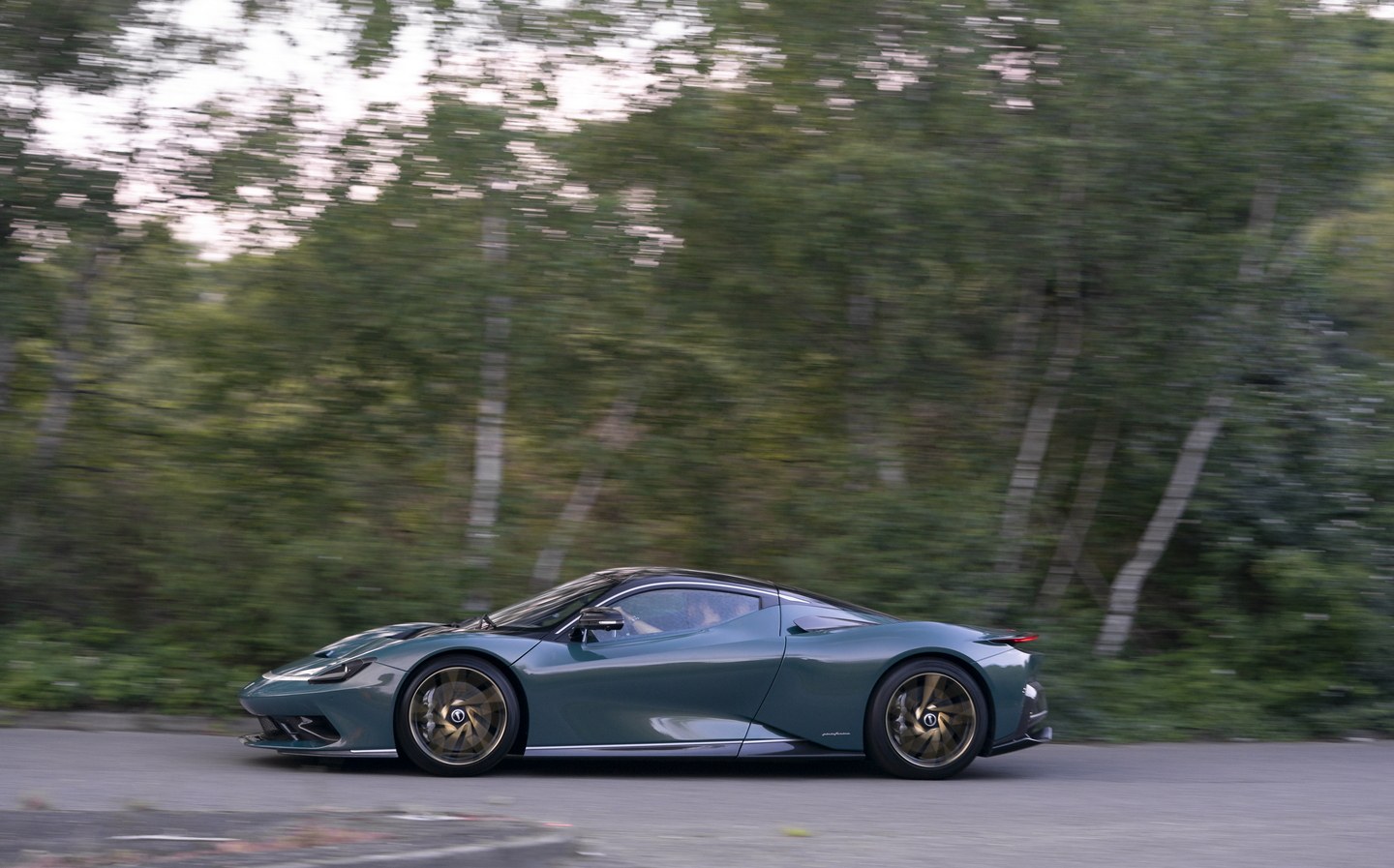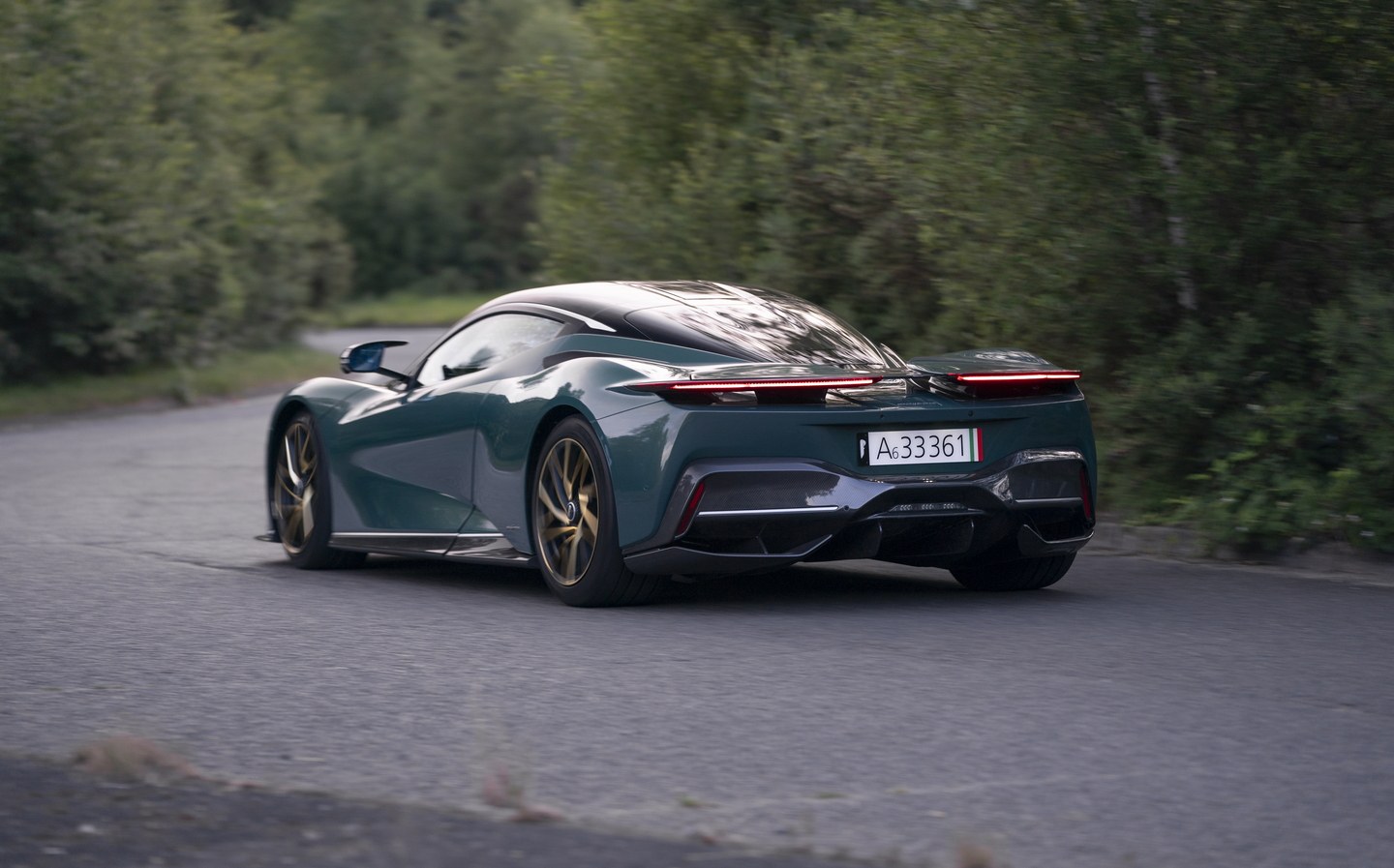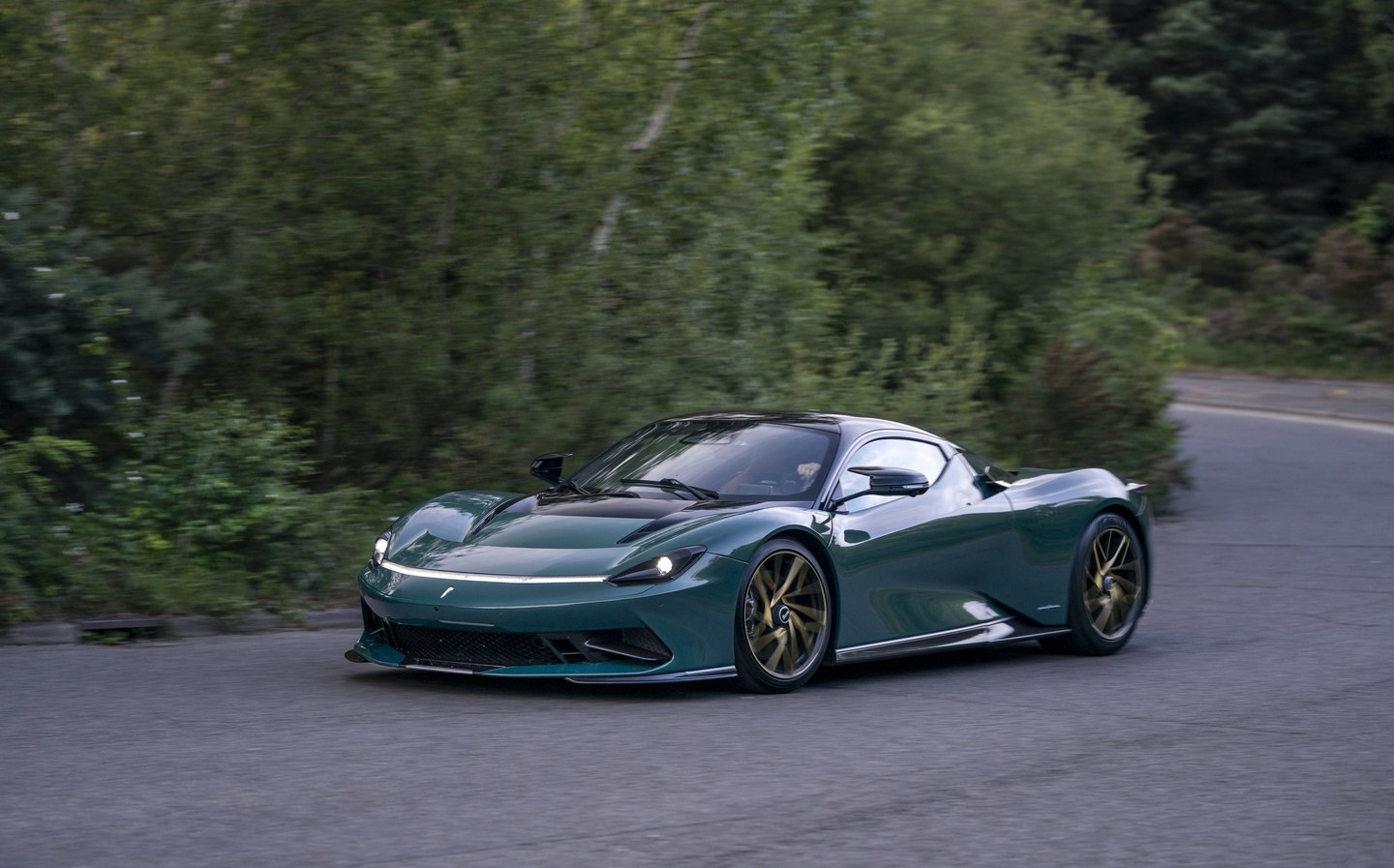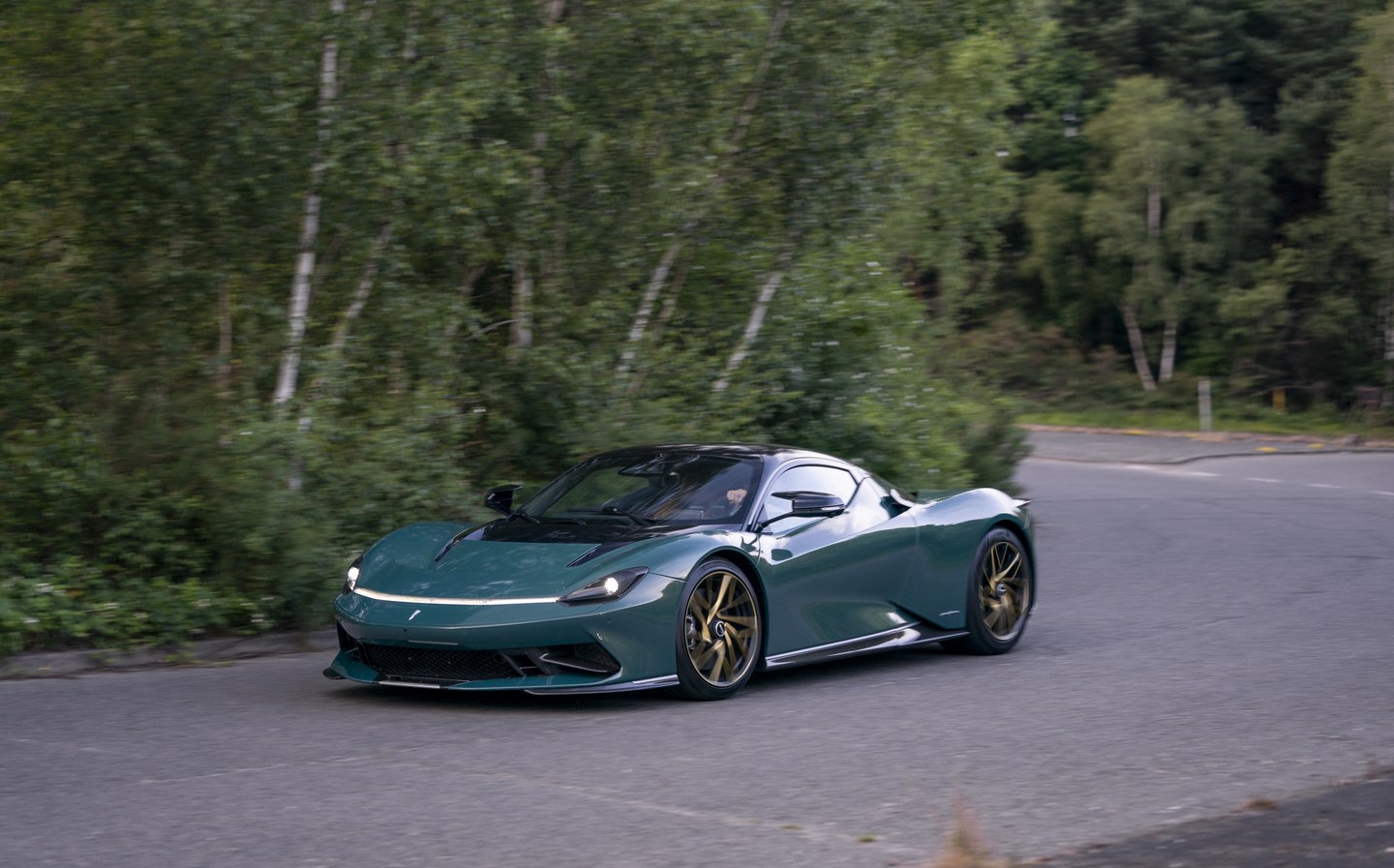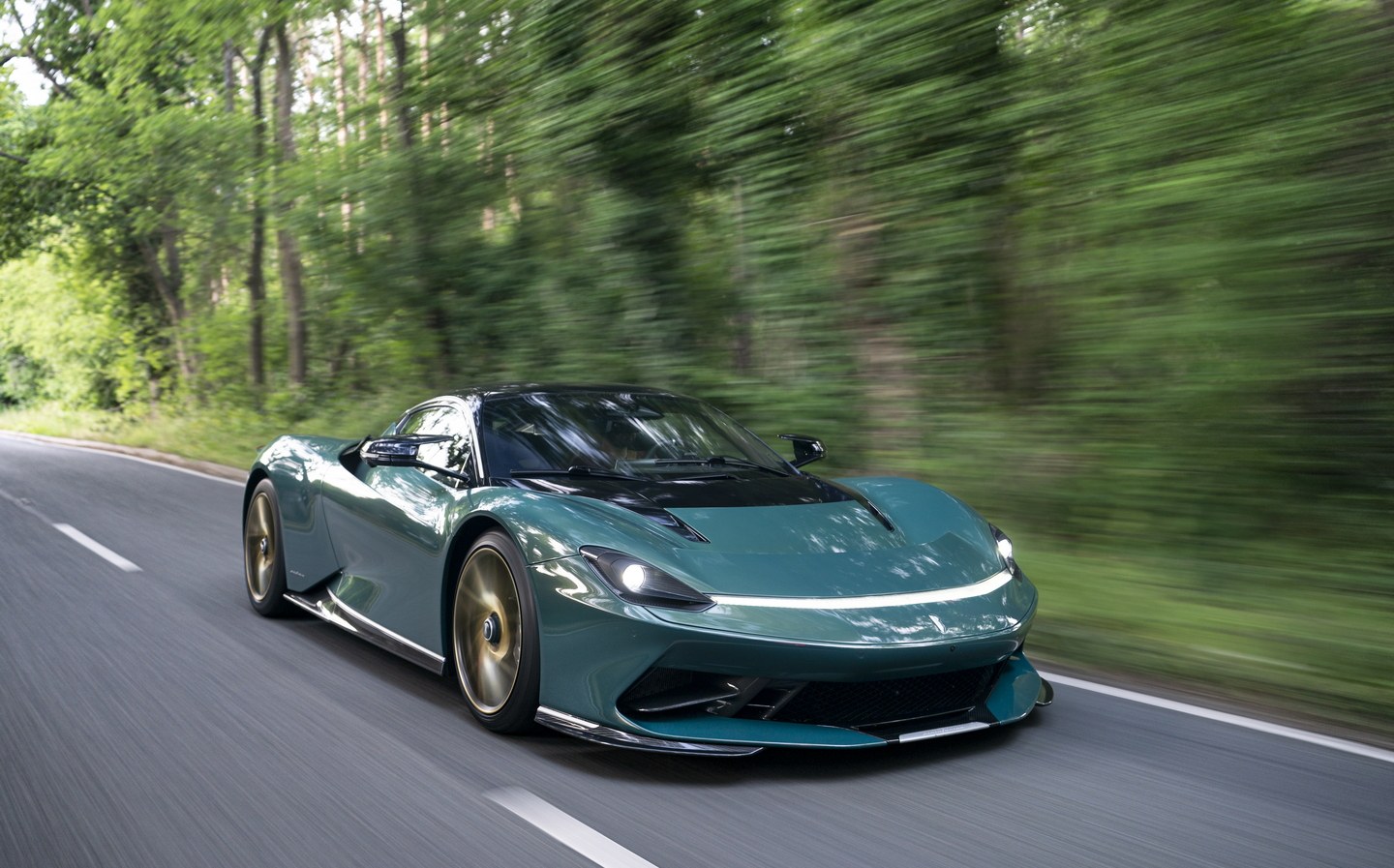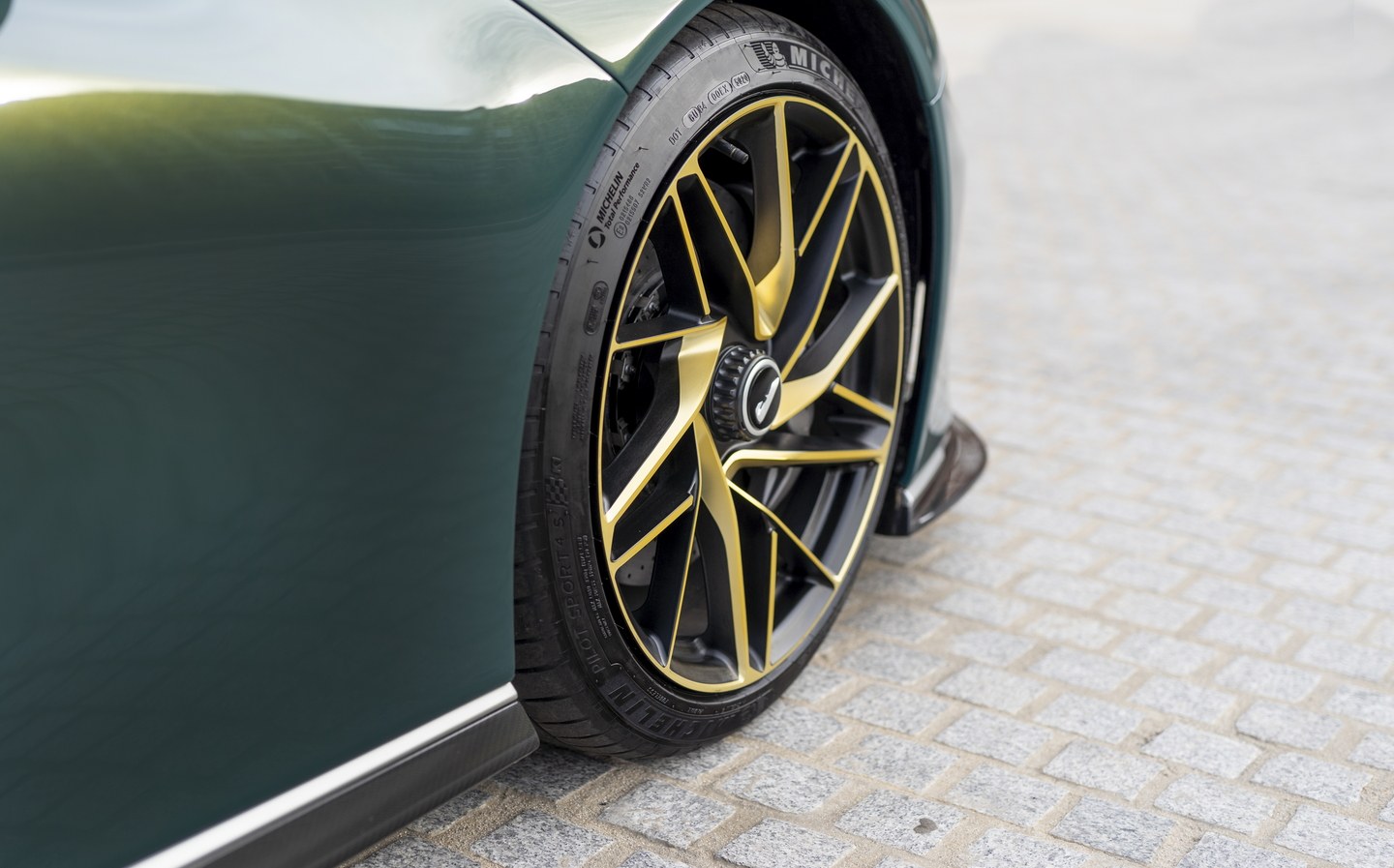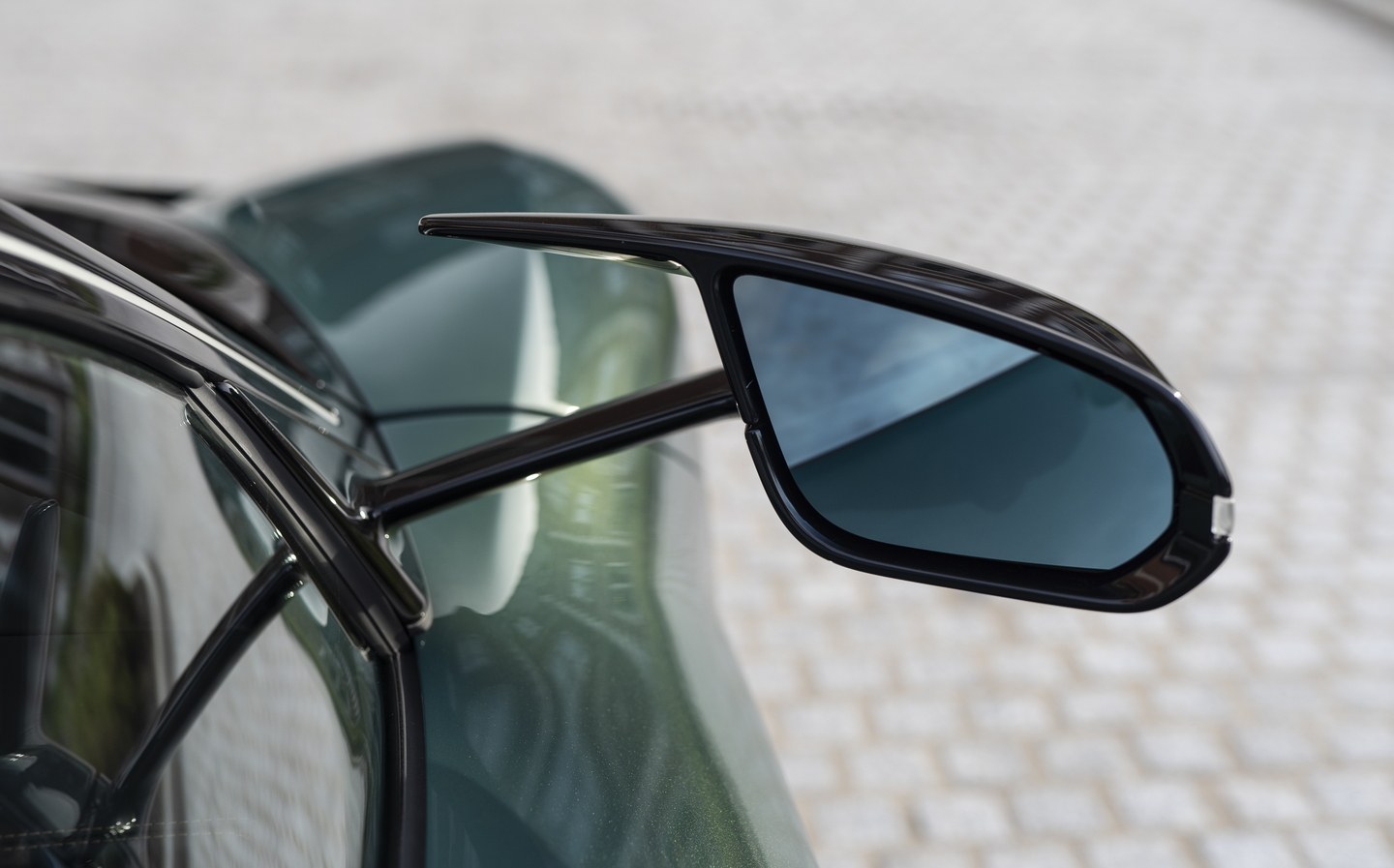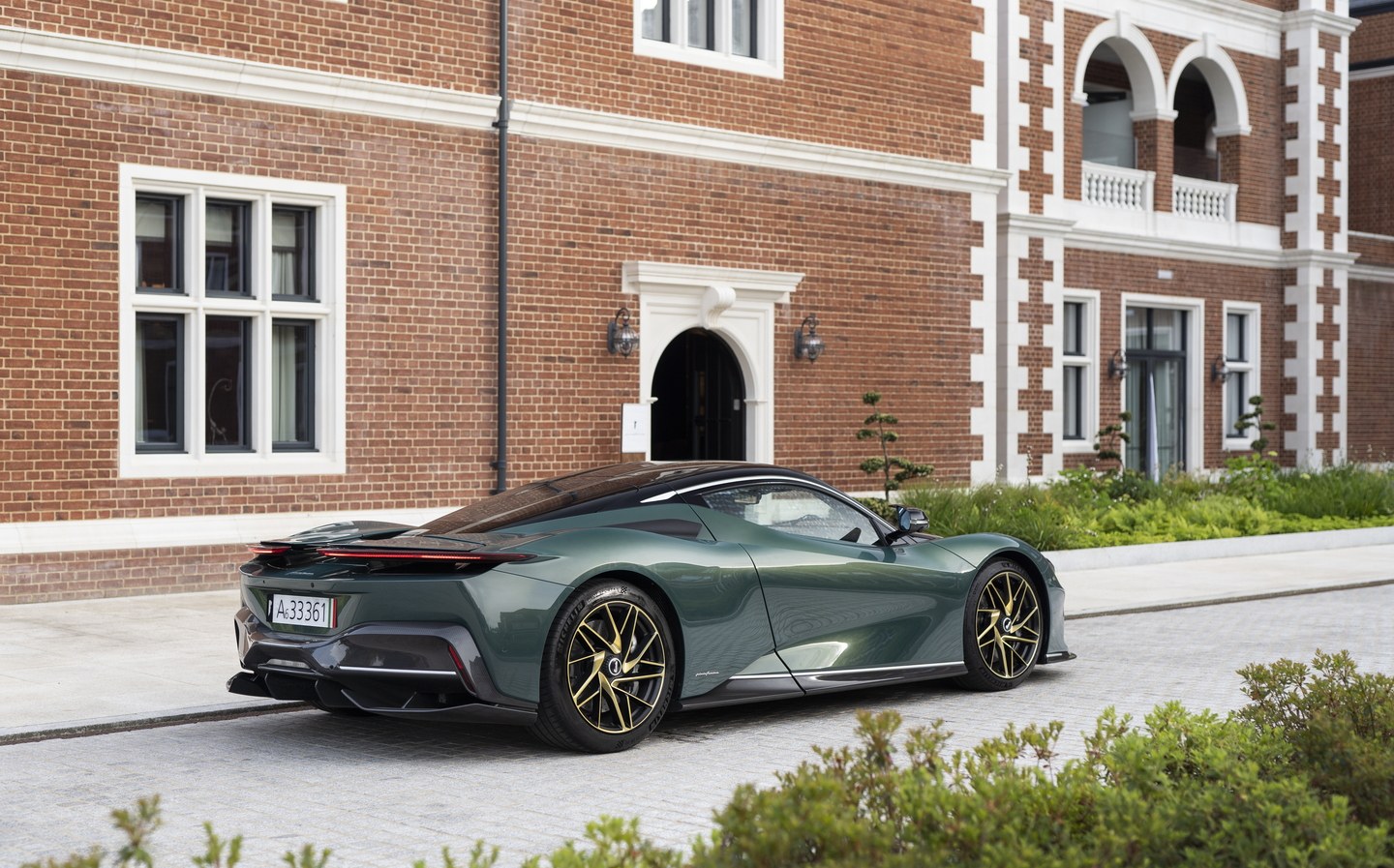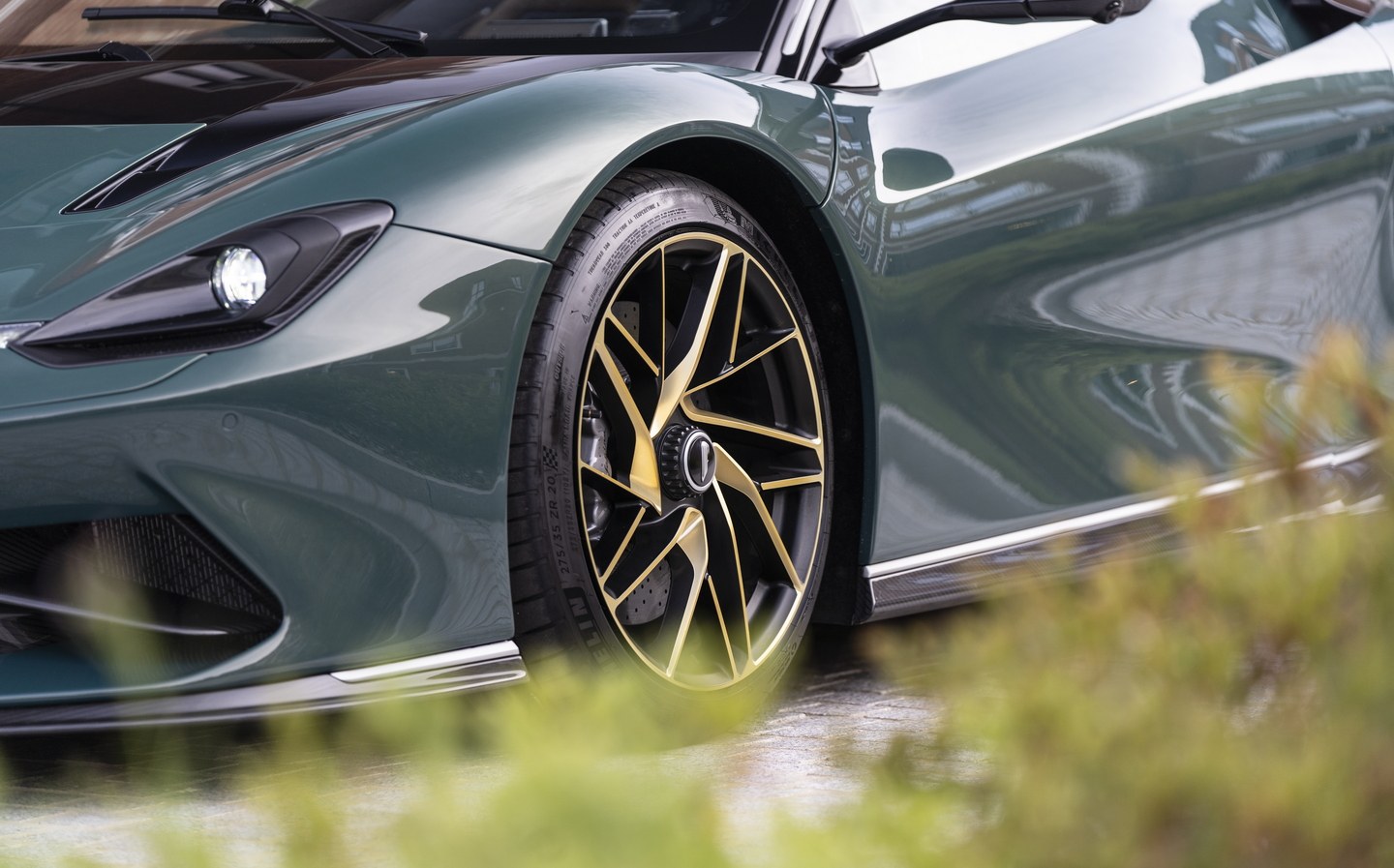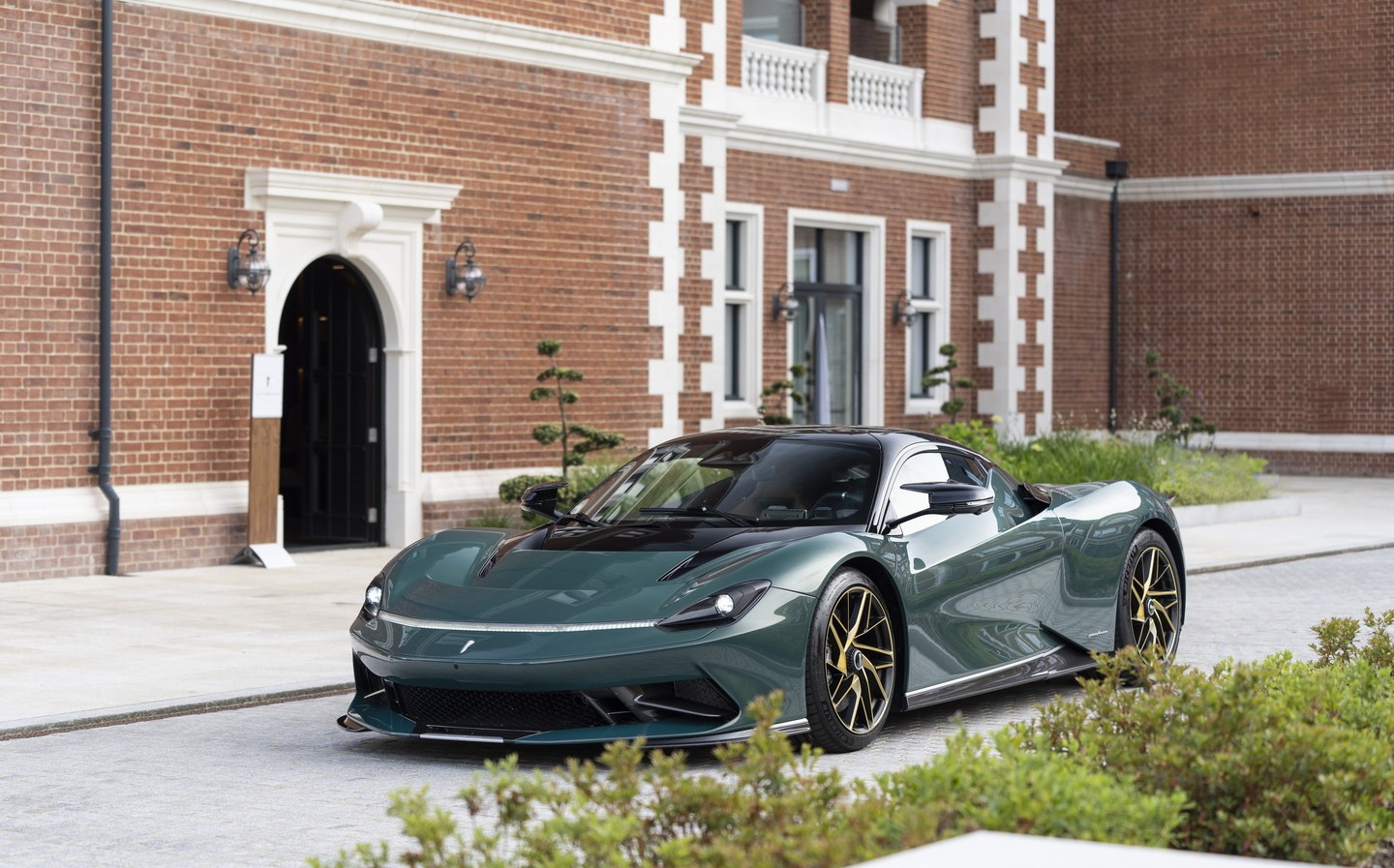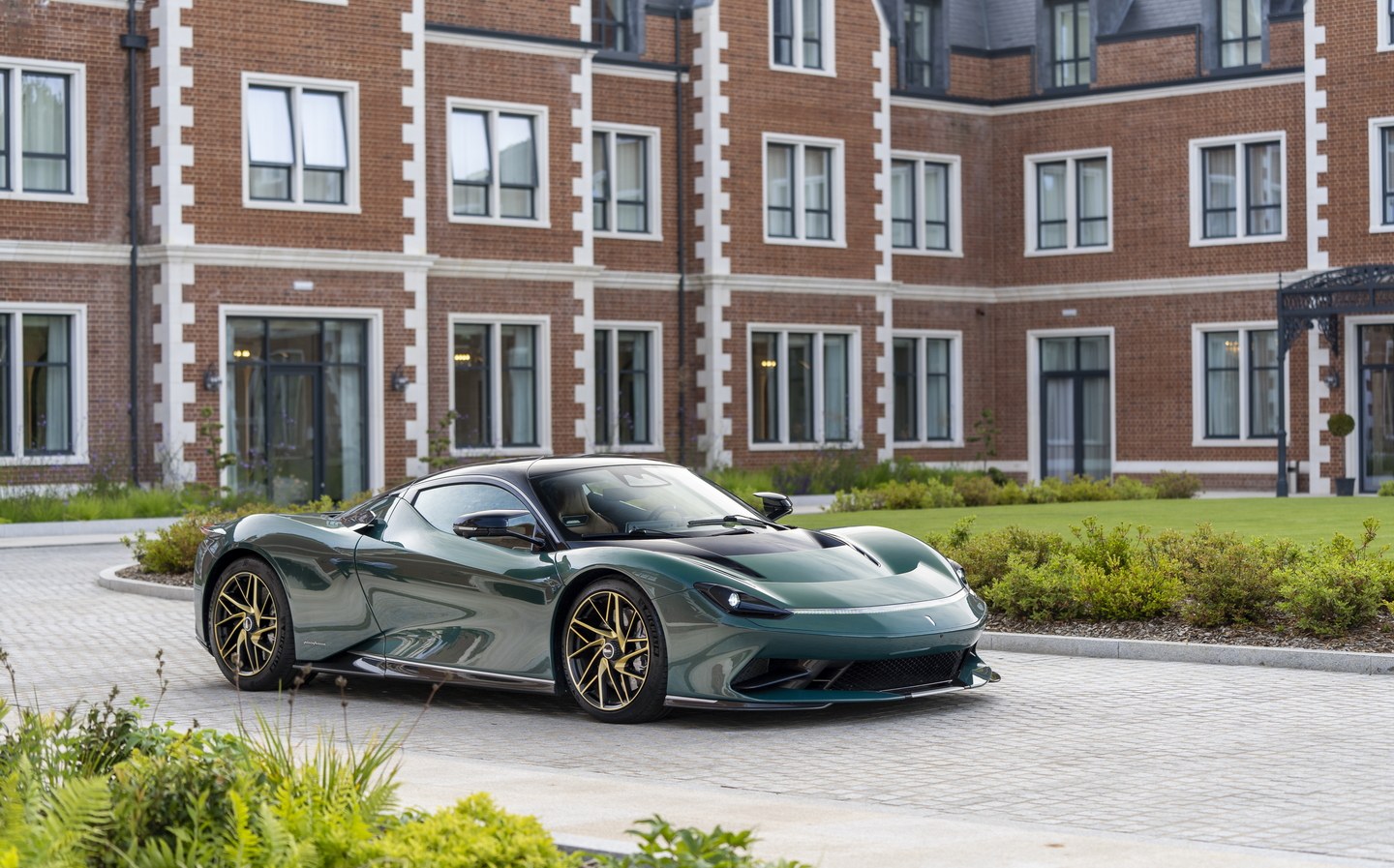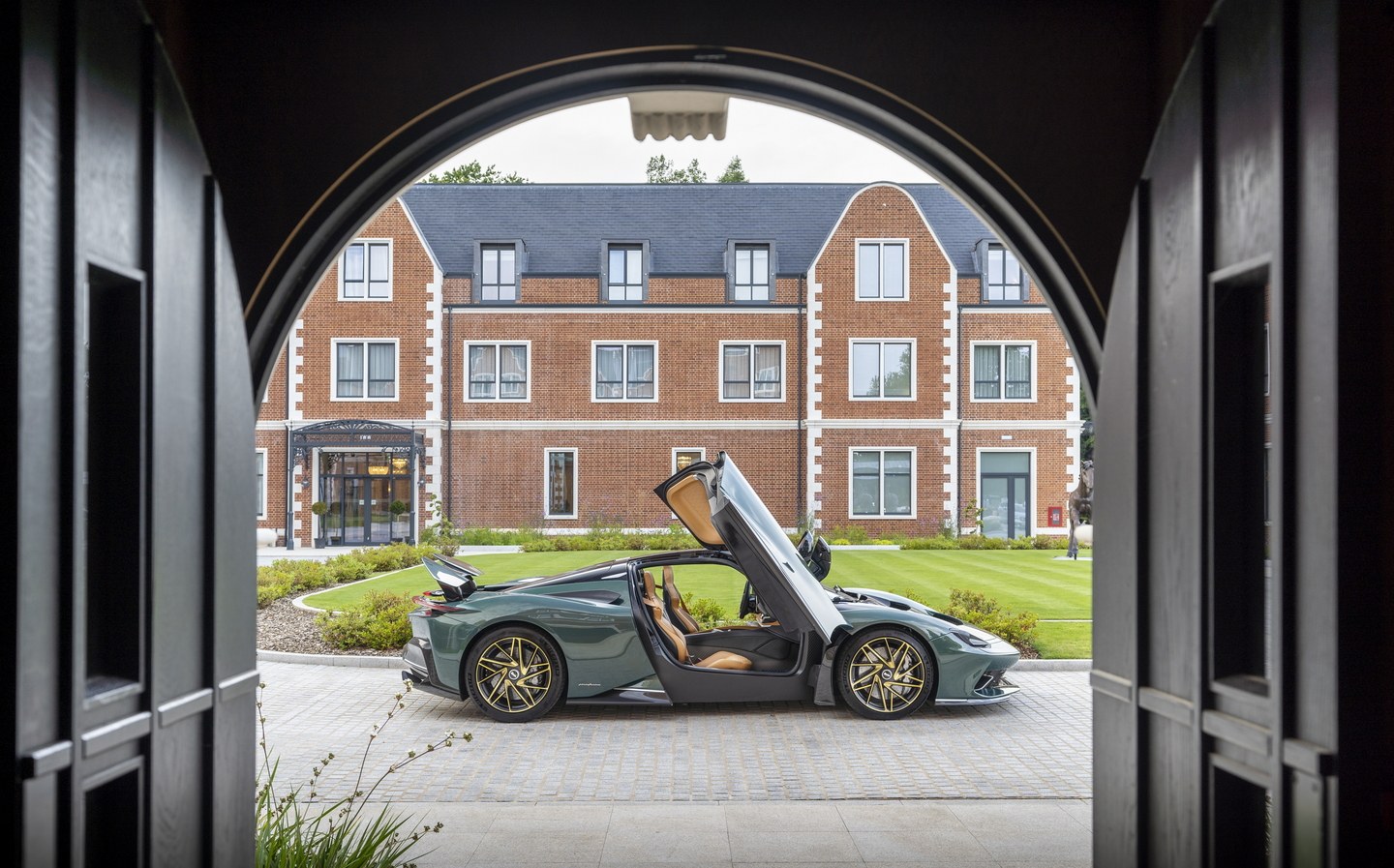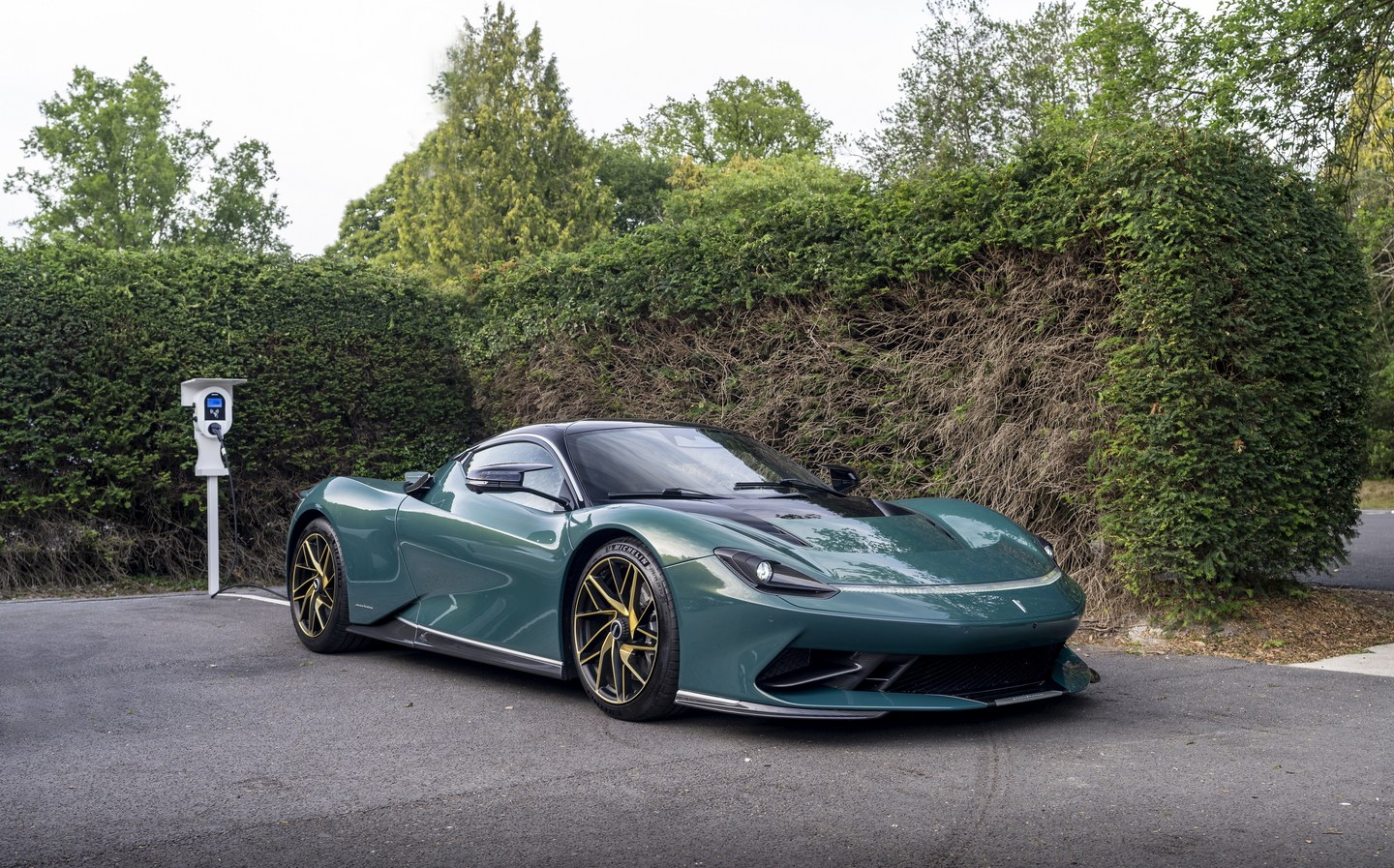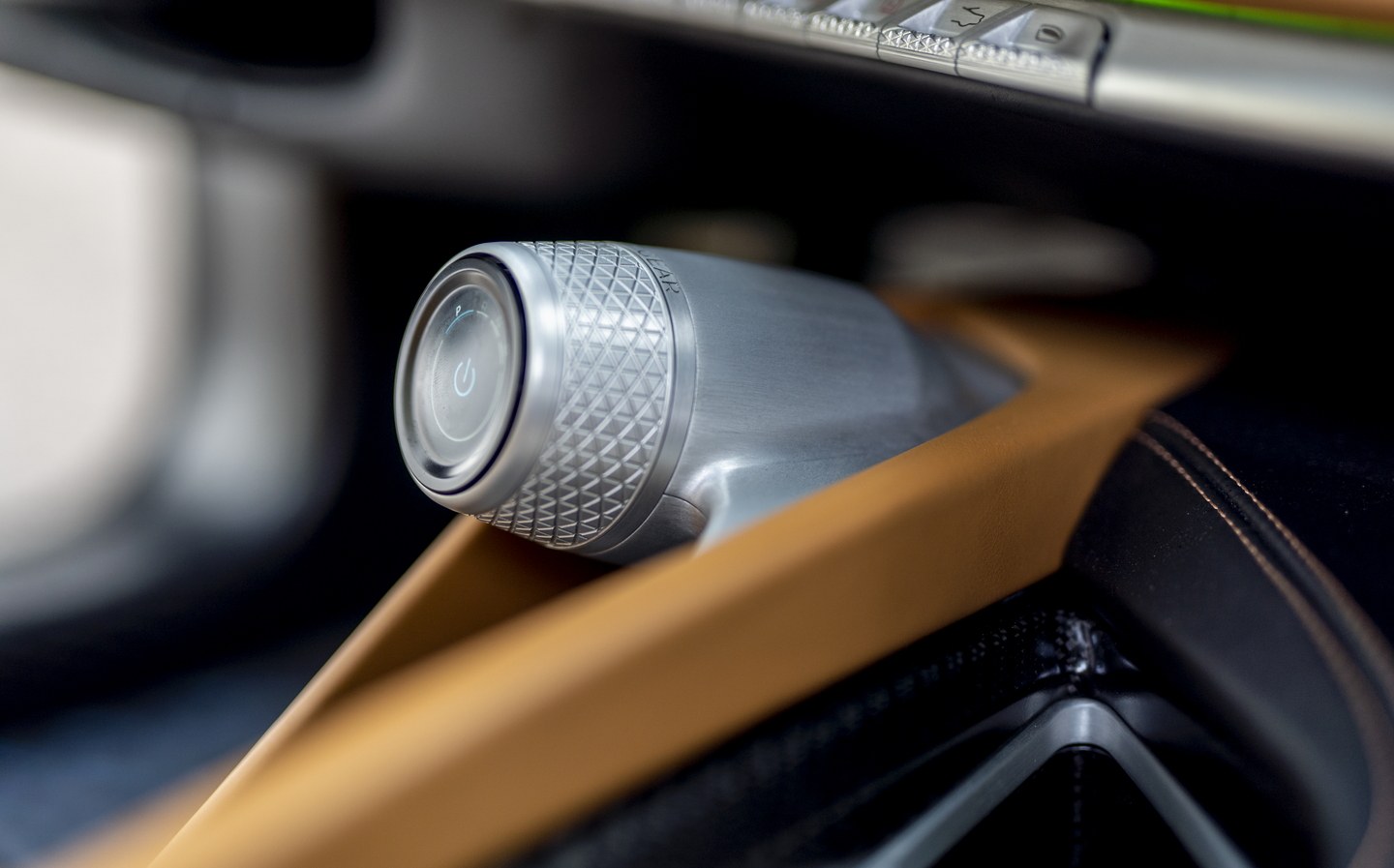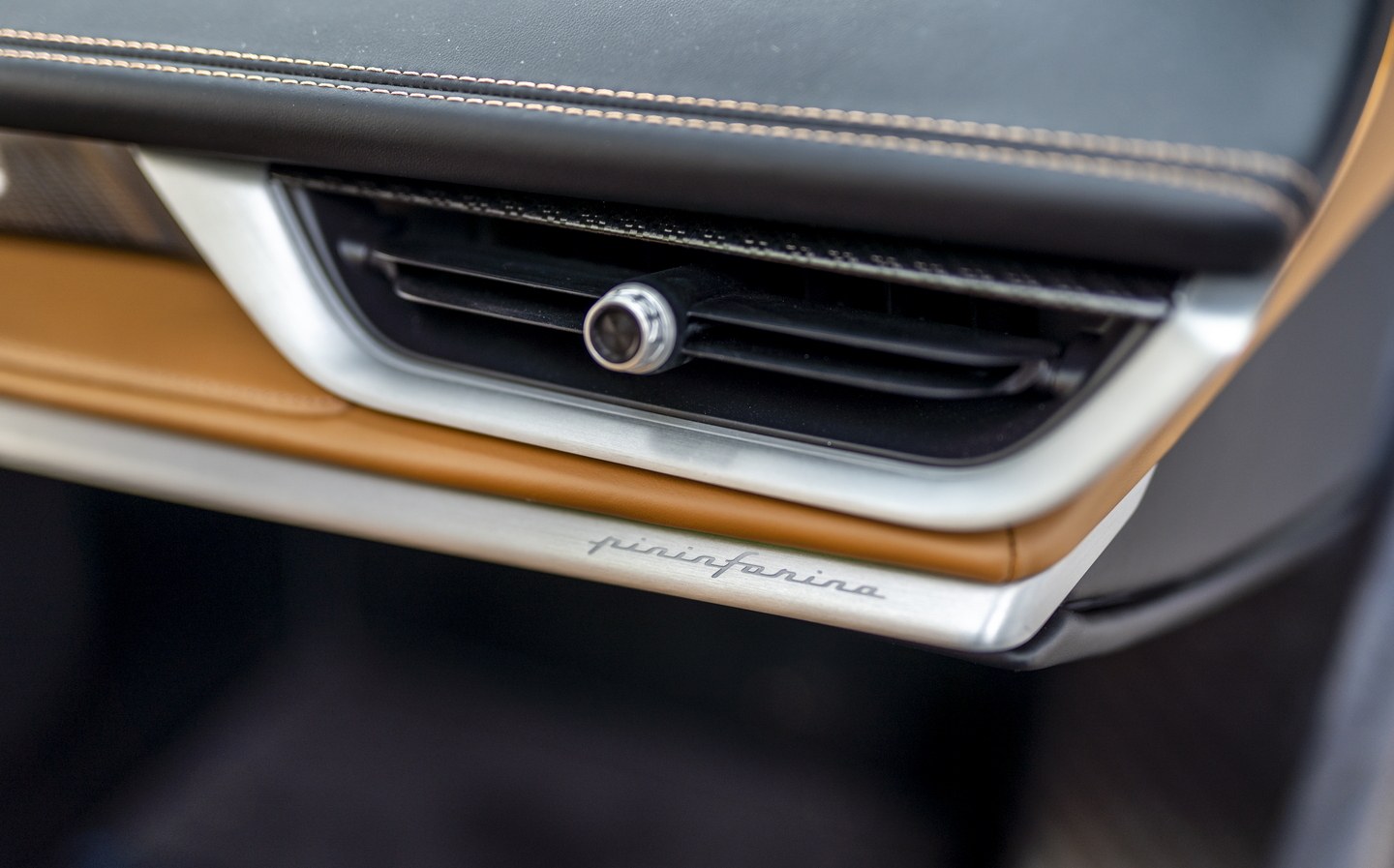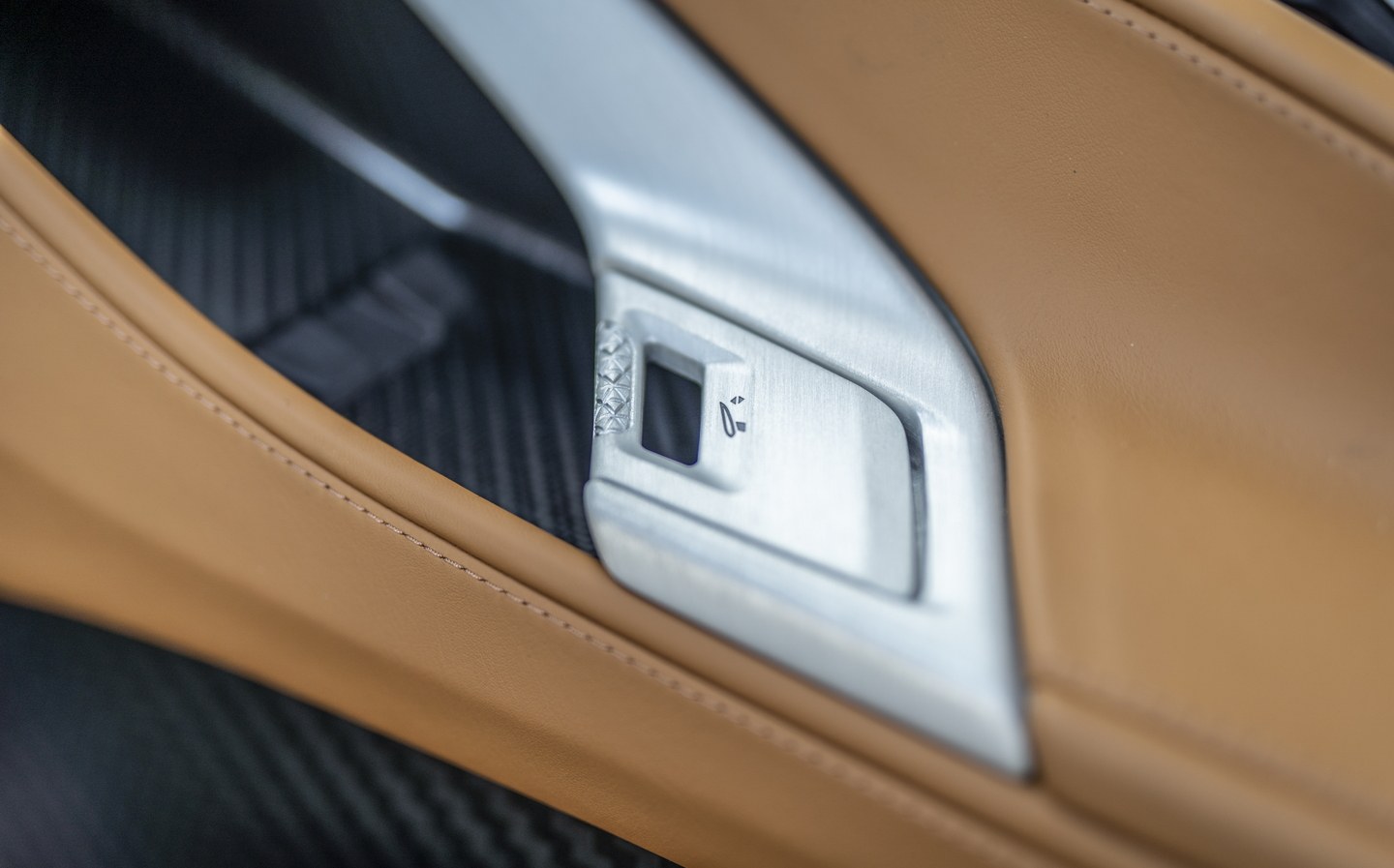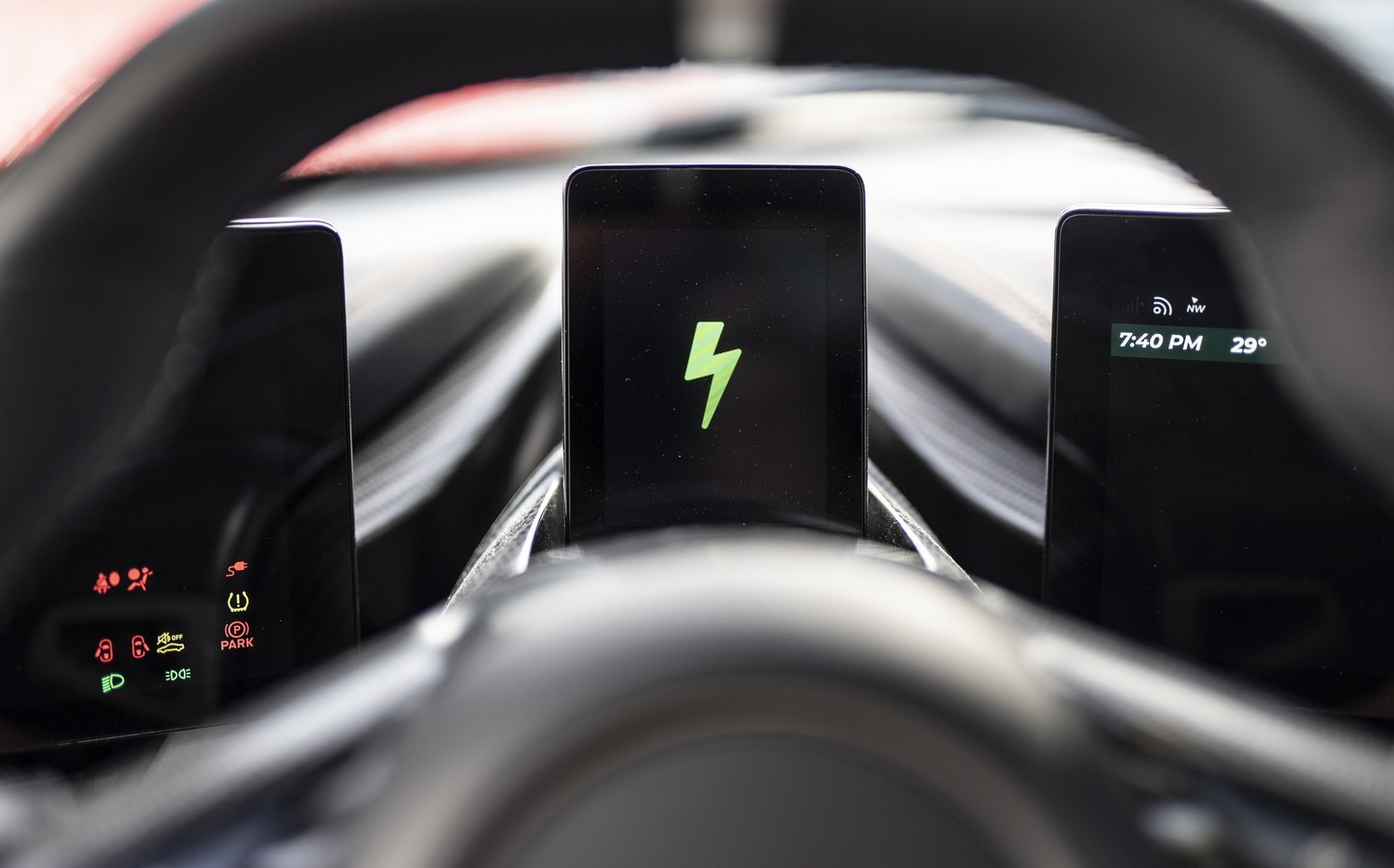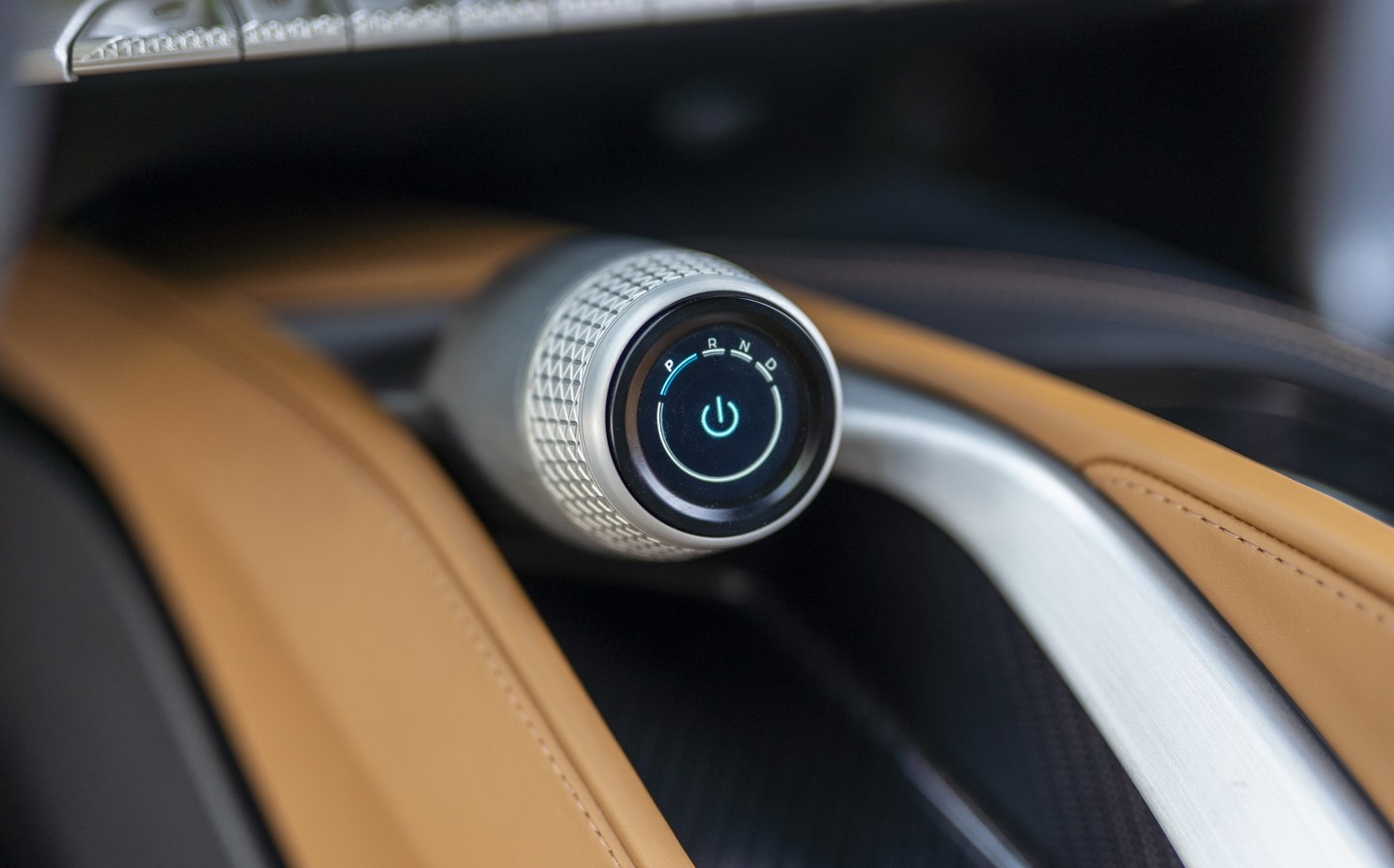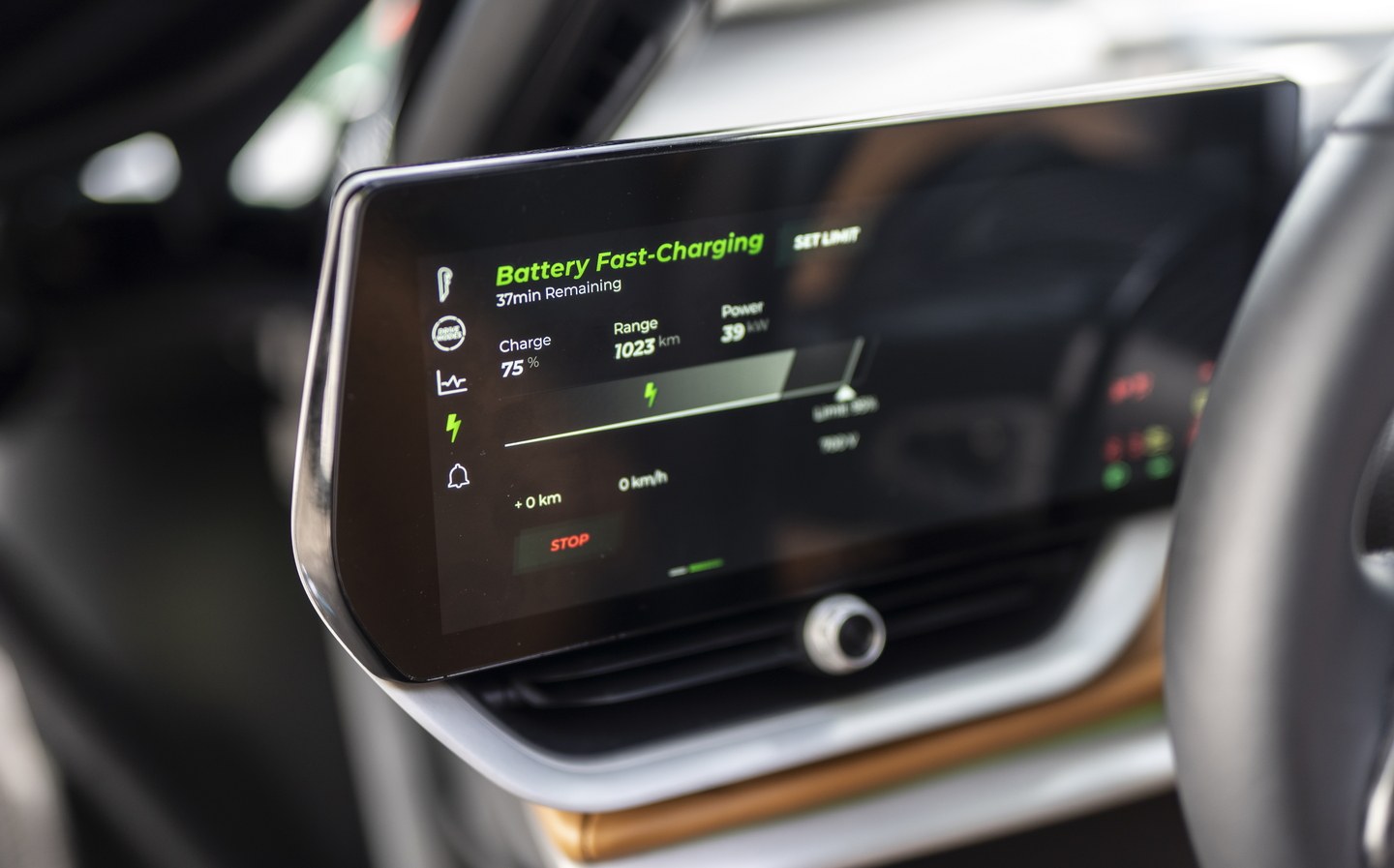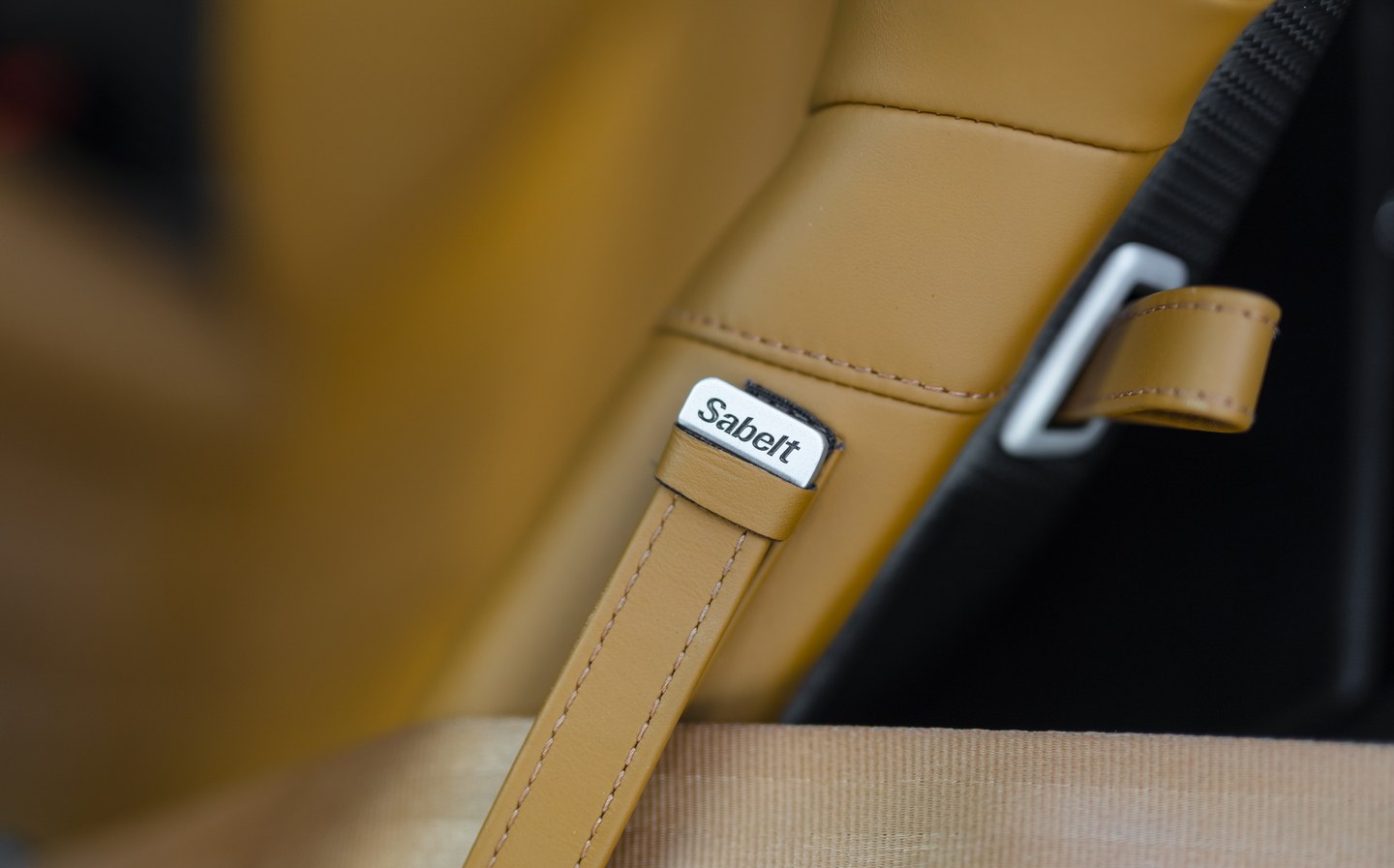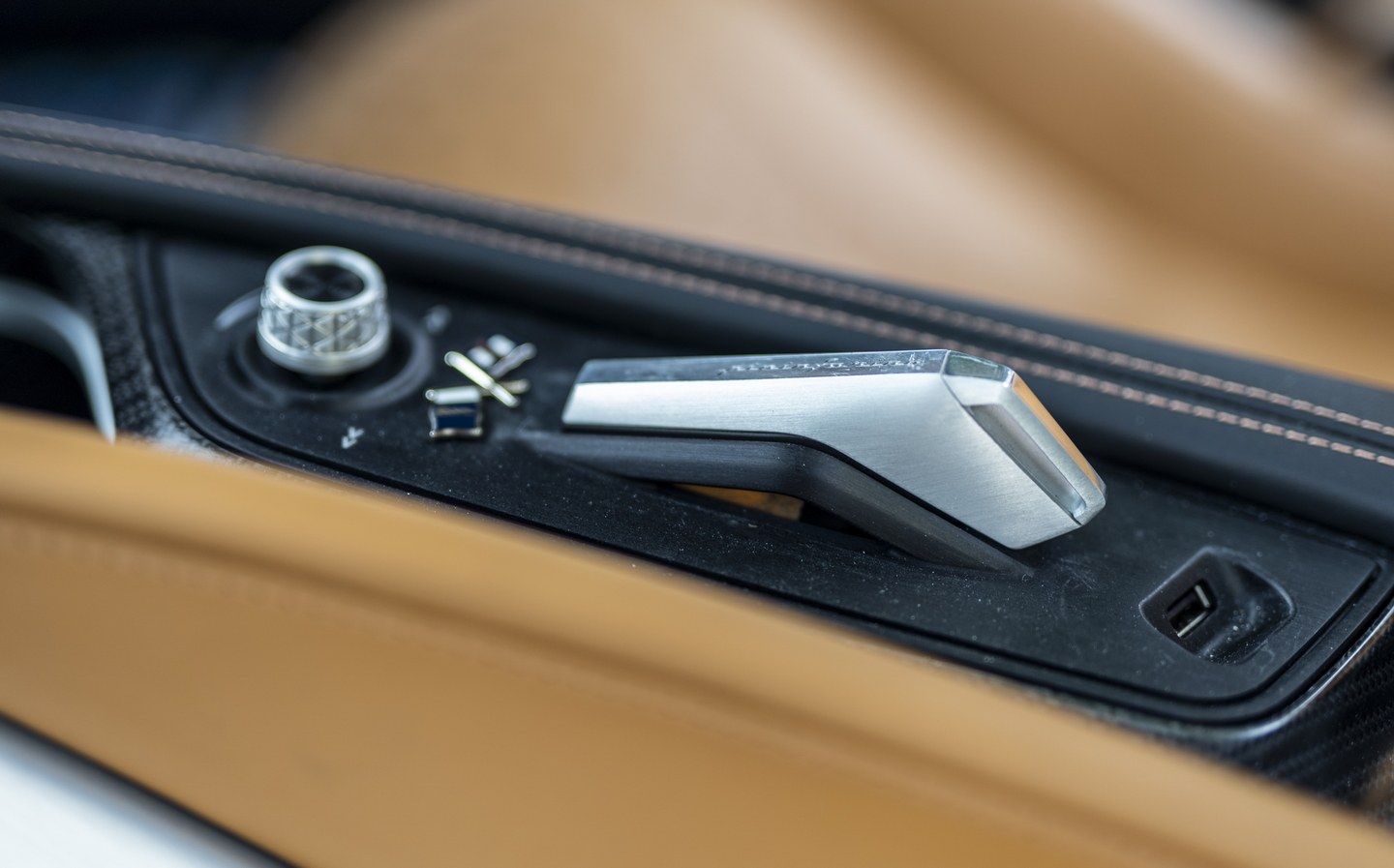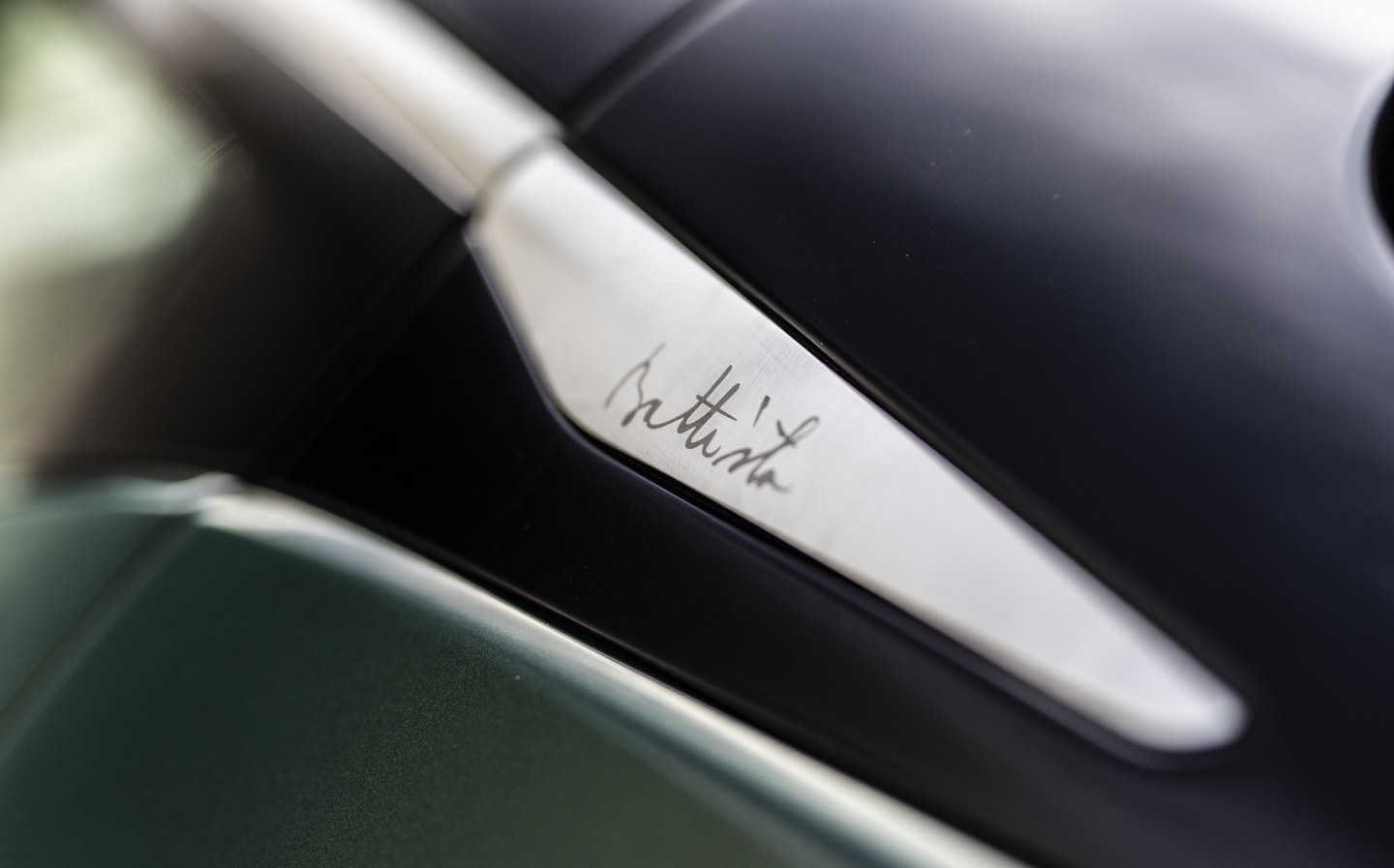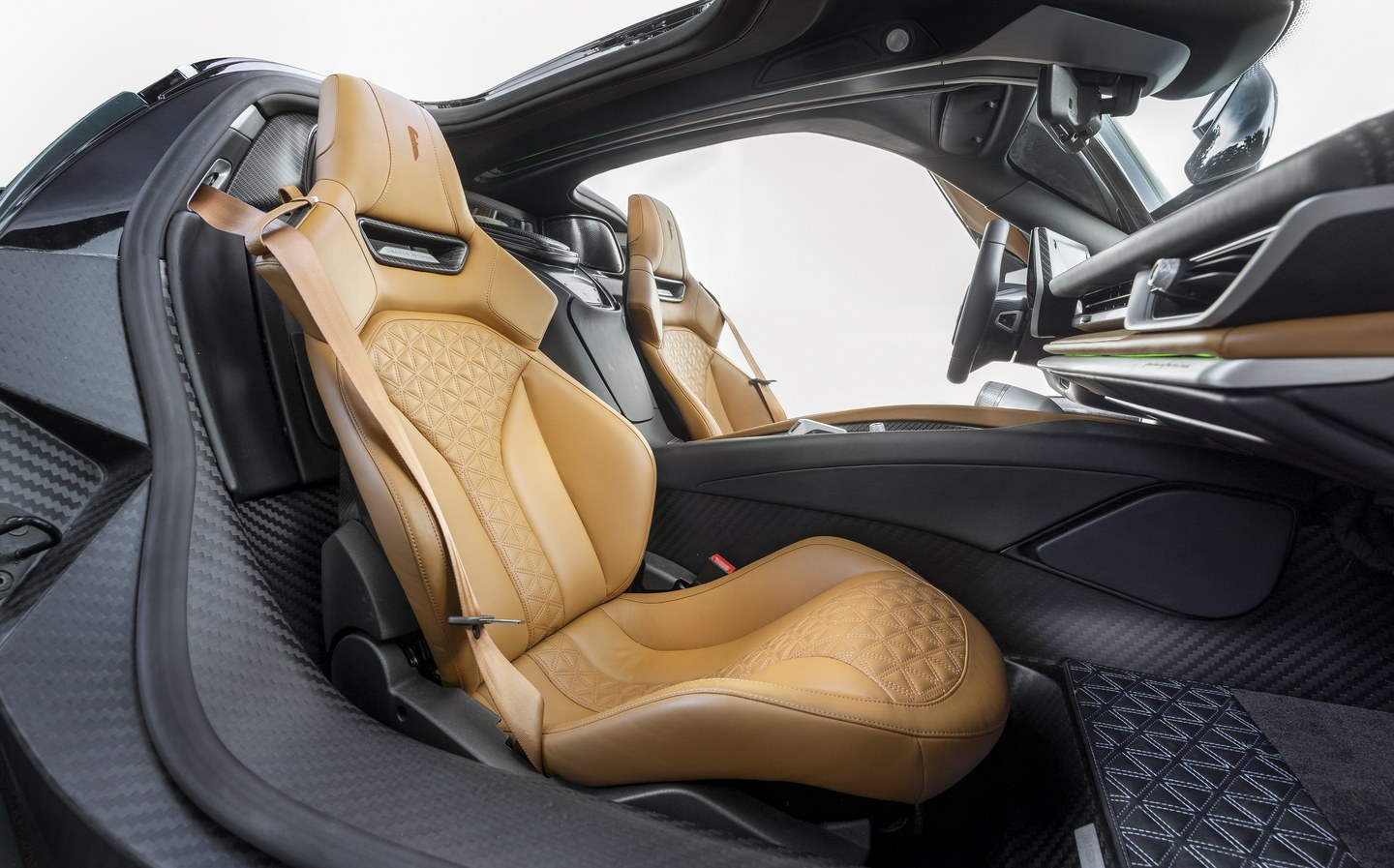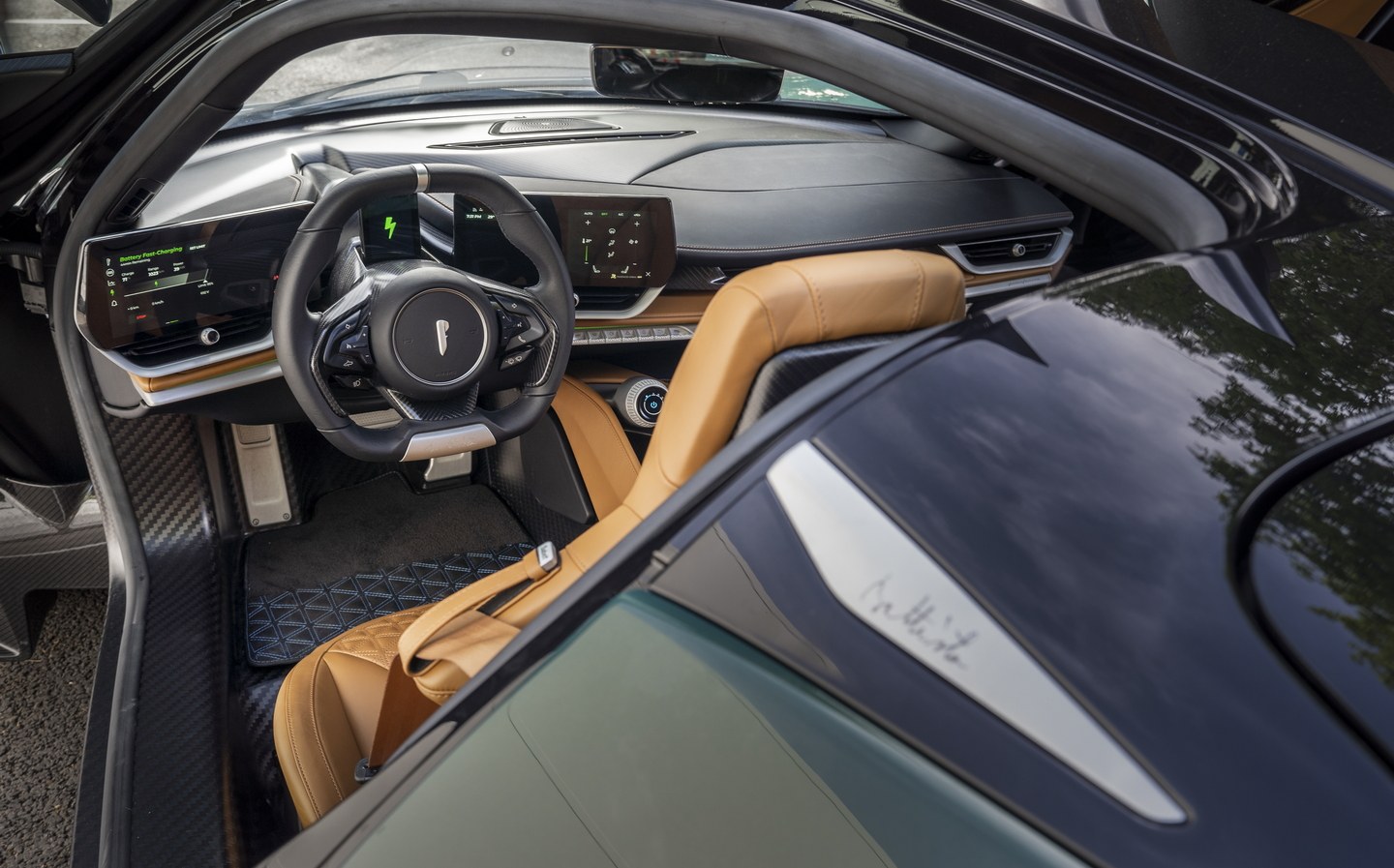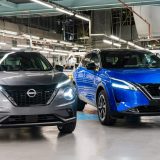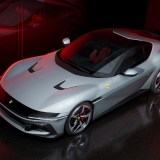Pininfarina Battista review: A collectable Italian hypercar that just happens to be an EV (with 1,874bhp)
Have you a spare £3m?
If the Pininfarina name sounds familiar, that’s because it’s the design house behind some of the world’s most recognisable and beautiful cars. The Ferrari 365 GTB/4 Daytona was a Pininfarina job, as was the Maserati GranTurismo and the Alfa Romeo Spider. No wonder the name is well known among aficionados.
Now the company has struck out on its own, building electric cars for discerning collectors. Eventually, Pininfarina plans an entire range of zero-emission vehicles, but it’s starting off at the top with the Battista hypercar — and we’ve managed to get behind the wheel for a review.
Named after the company’s founder Battista Farina, the ultra-exclusive hypercar is here to make this corner of the market its own, offering customers almost 1,900bhp and a top speed of more than 200mph. Few cars can compete with that, and even fewer can do it while looking this good.
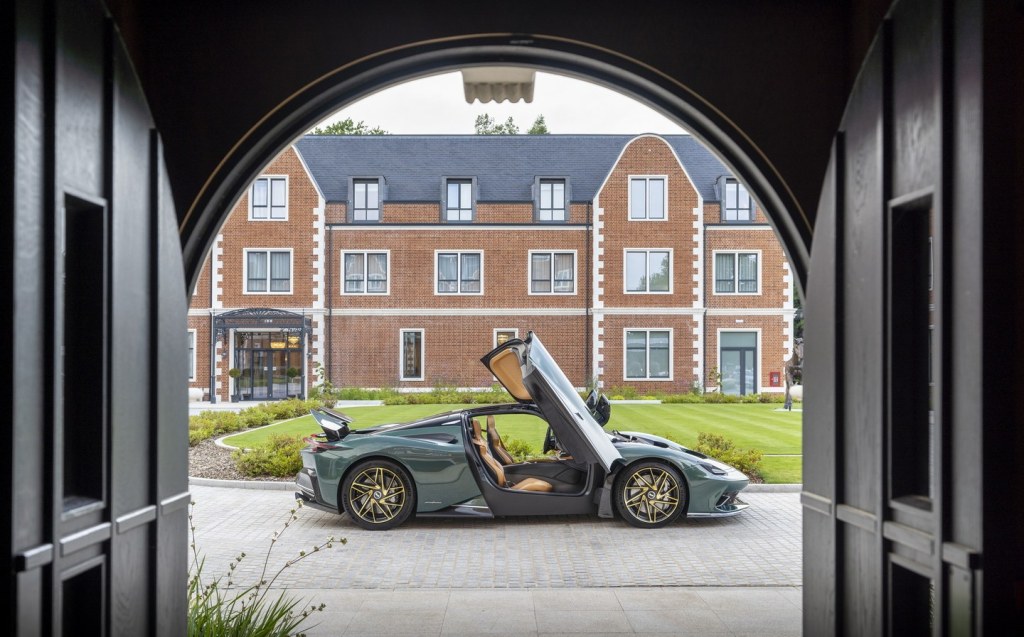
But all this power and performance comes with an unsurprisingly enormous price tag. Pininfarina charges at least £2 million for a Battista, and that’s before you’ve personalised it or paid the tax. Do all that and you’re probably looking at spending the thick end of £3 million to own just one of the 150 examples that will be built. Which begs the obvious question: is it worth it?
Exterior design and rivals
Pininfarina has promised that all its cars will be beautiful, and the brand is certainly fulfilling that brief with the Battista. No matter where you care to stand, the Battista is a stunning, striking piece of automotive design that looks every bit as fast as the figures suggest. There’s an old adage among pilots that says, ‘if it looks right, it is right’, and the Battista definitely looks right.
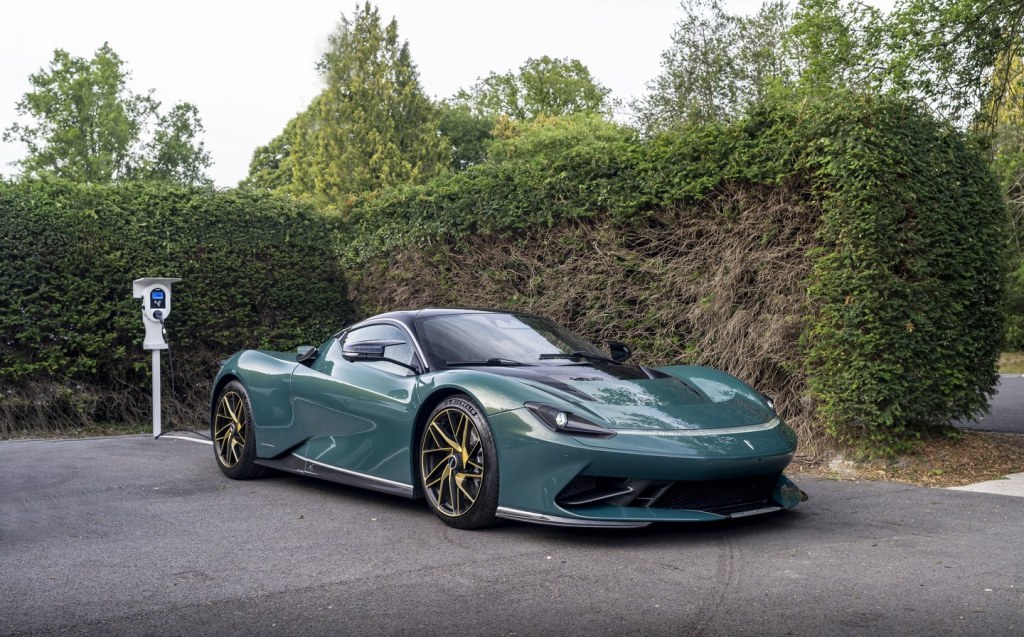
From the low, sharp nose to the vents in the bonnet and from the contoured doors to the massive rear spoiler, the Battista looks incredible. And it’s even better when you open the doors.
Of course, the lucky few who can afford a hypercar are spoilt for choice – Bugatti, Hennessey and Koenigsegg will all supply super-fast models at a price, and the Lotus Evija and Rimac Nevera are obvious electric rivals with head-turning appeal – but few look as good as the Pininfarina Battista.
Our test car came in a deep shade of metallic green with flecks of gold in the paint, setting off the gold-coloured alloy wheels and giving the whole car a slightly bronzed appearance when the sun shines. Like many of its owners, one might joke (but that’s below us, of course).
All that said, buyers can tweak their cars to their own desires, working with the company’s chief designer to create their own, bespoke paint jobs and interior choices. Pininfarina will even paint specific parts of the car in certain colours to create the illusion of a different shape. The designers have found, for example, that painting a swathe of the lower front bumper black makes the air intakes look bigger, giving the impression of a sportier body kit.
Interior and practicality
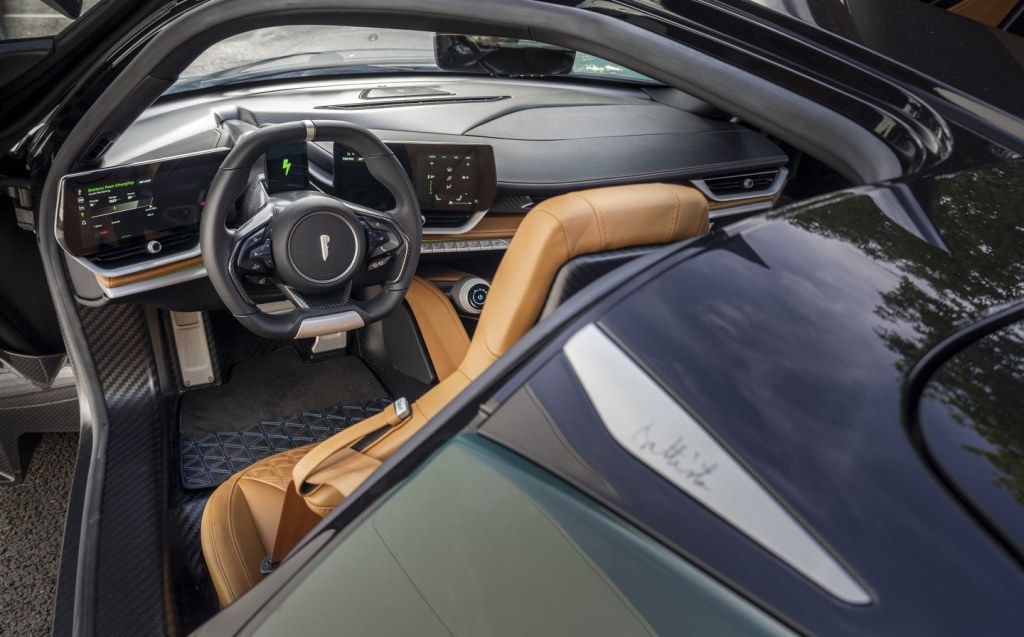
The exterior design is clearly one of the Battista’s main selling points, but the interior is also pretty spectacular. As with the outside, customers can configure it to their liking, but the specification of our test car was pretty much perfect. The carbon-fibre tub showed through under the quilted carpets and around the doors, while the seats were trimmed in tan leather and the fixtures and fittings were picked out in machined aluminium.
The front-seat passenger doesn’t get much to play with, aside from an air vent, but the driver gets a simple three-screen array comprising two touchscreens — to control vehicle settings and the infotainment — plus a tiny central screen showing speed and trip computer data, as well as the current drive mode.
Two dials are positioned either side of the driver, with the switch by their left knee controlling the drive mode and the one by their right knee operating forward and reverse gears.
It’s an uncomplicated design, and one that’s somewhat reminiscent of Ferrari interiors, but it’s all beautifully made and incredibly stylish, which is exactly what you expect from a car that costs more than £2 million. Like a true supercar it does lack space, with only a few tiny cubby holes in the front and an almost laughably small boot, but what did we expect?
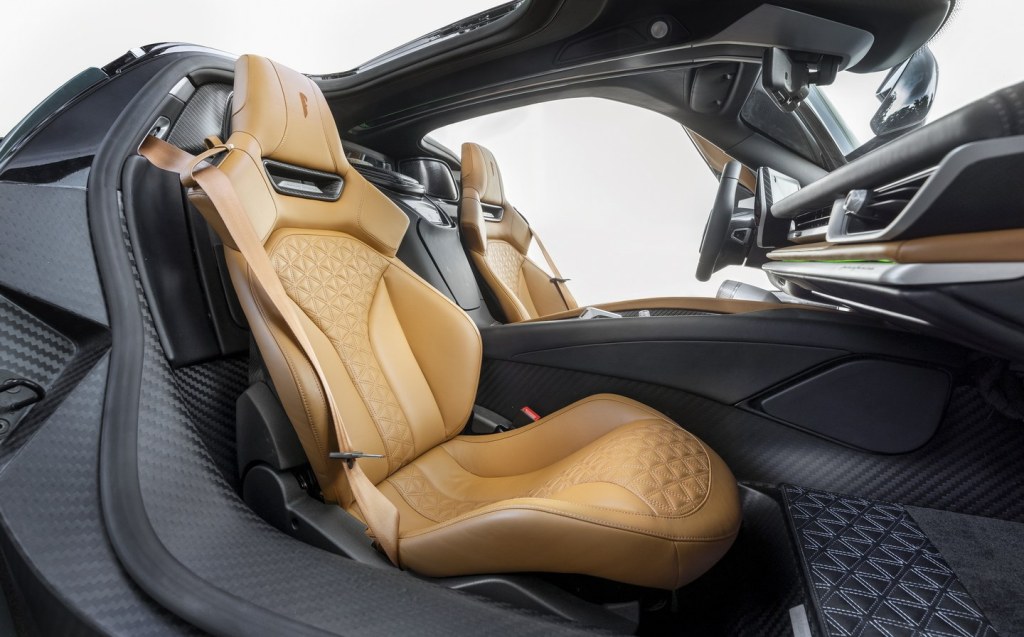
The company says there’s enough space to pack for a weekend away, and it’s designing bespoke luggage that fits the compartment, but this is a collector’s item, rather than a useful everyday driver.
Passenger space isn’t bad, mind, with ample legroom and seat adjustability, although headroom can be a little bit tight for taller occupants when you shut those dramatic doors.
Technology and safety
When we talk about technology, we usually spend ages droning on about touchscreens and climate control systems, but the Battista puts the focus elsewhere. And we don’t just mean the electric motors.
A case in point is the rear-view ‘mirror’ that can be used to limited effect as a conventional mirror, but works best in camera mode, which displays the view of a camera on the rear bumper on a high-definition display. Supercars and hypercars have poor rearward visibility? Not any more.
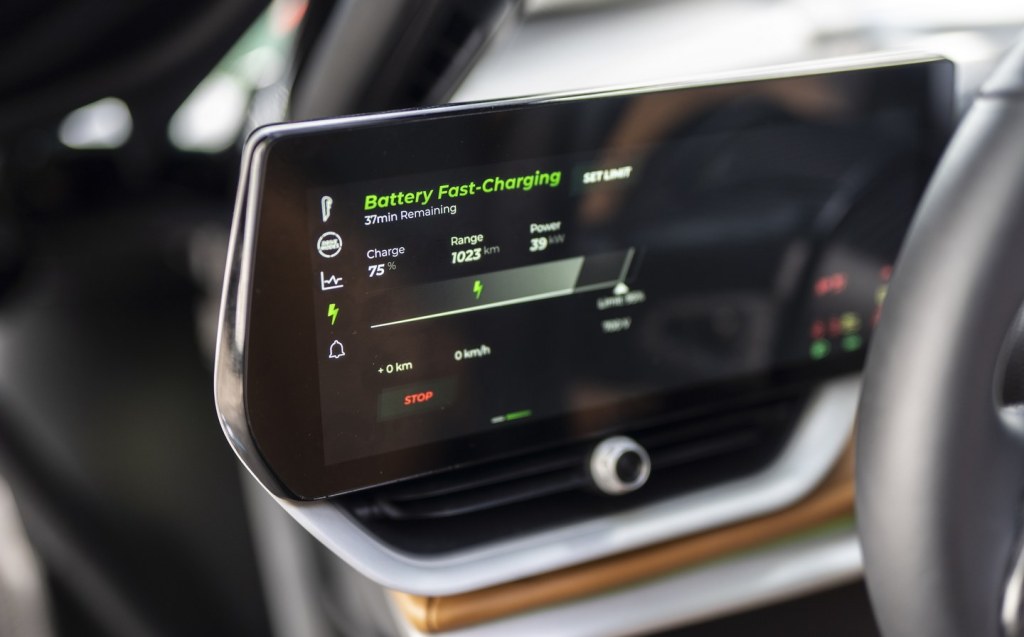
Even better attention to detail can be found in the car’s charging system. The Battista is designed to be a collector’s item, which means it’s going to spend most of its time sitting around in a climate-controlled garage doing little. So Pininfarina has installed software that allows the owner to plug the car into a charger and leave it for up to three months at a time. The on-board systems then manage the battery level to ensure there’s minimal impact on the lithium-ion cells.
And that’s in addition to the 10-year battery warranty and a design that makes it easy to swap out a battery — or even an individual module of the battery — when it is damaged or comes to the end of its life. But when it’s in rude health, that battery can be topped up at charging speeds of up to 180kW.
Then there’s the expertise involved in the spoiler at the back, which not only produces enormous amounts of downforce but also operates as an air brake to help slow the car down in an emergency or during a big stop on a track. Perhaps more importantly, it looks really cool when it extends out of the rear bumper.
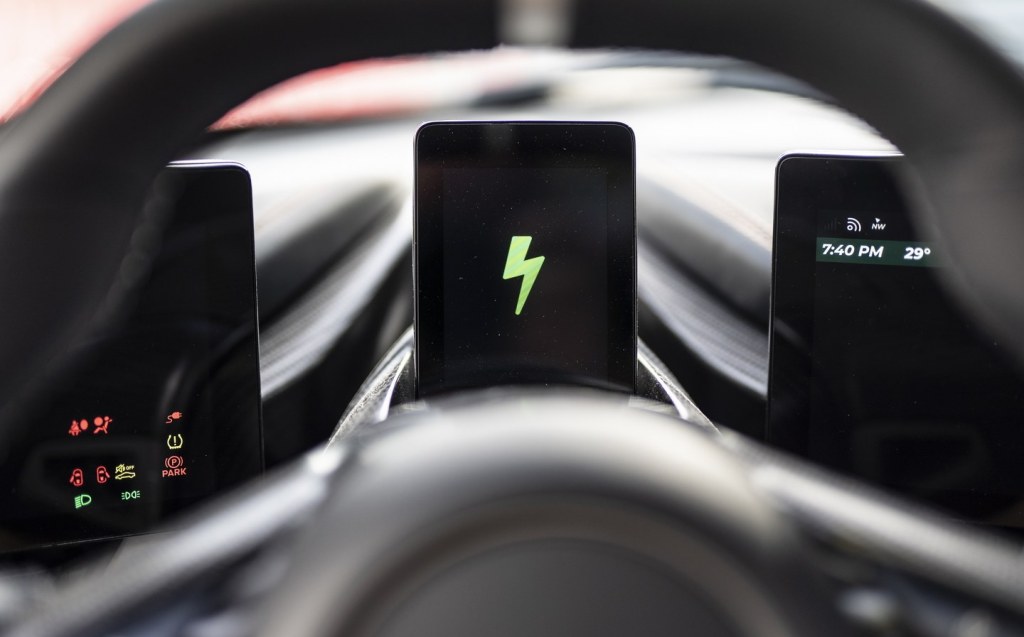
Of course, there’s more conventional tech on board, too. The two screens either side of the steering wheel allow the occupants to tune the radio, set the navigation system and all that jazz, but they can also adjust the seat positions, the mirrors and the steering wheel.
The screen on the left, meanwhile, allows the driver to adjust the driving modes, including the Caraterre setting that can be tailored to the driver’s needs. That means they can choose the power output, suspension stiffness and steering weight with a tap of the screen.
For a small-scale manufacturer, it would be easy to forgive issues with the touchscreens, but there’s no need with the Battista. Clear displays, responsive operating systems and logical menus make the infotainment systems in the Pininfarina superior to those of plenty of mainstream manufacturers.
Performance, power output and acceleration
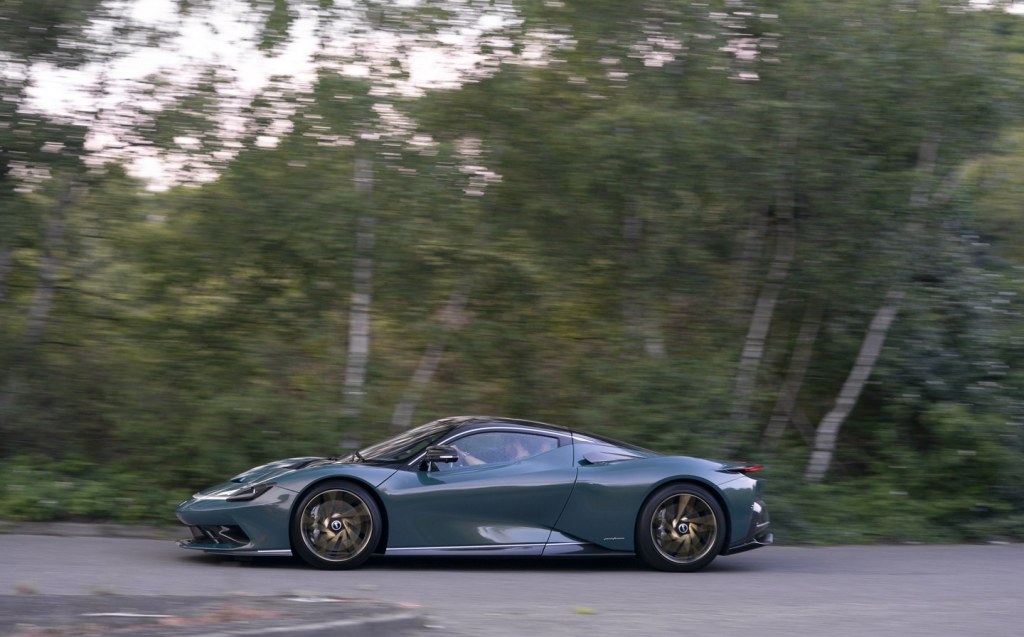
Under the Italian skin, the Battista’s mechanical components are largely based on parts from Croatian electric car maker Rimac. The company made famous when Richard Hammond crashed one of its cars into a Swiss hillside provides the lower part of the Battista’s carbon-fibre monocoque and the drivetrain, while Pininfarina assembles the rest.
Rimac’s components include four electric motors (one for each wheel), two gearboxes (one for each axle) and a 120kWh battery that sits low behind the seats and stretches out in a kind of T shape beneath what would normally be the transmission tunnel. Together, these components give the Battista a total of 1,874bhp and an official range of 300 miles on a single charge.
These numbers are very promising, and the Battista’s performance is as other-worldly as the data suggests. The sprint from 0-60mph takes less than two seconds, and 0-186mph (300km/h) takes less than 12 seconds. The top speed is limited to 217mph but Pininfarina reckons the car could do about 250mph with some choice modifications.
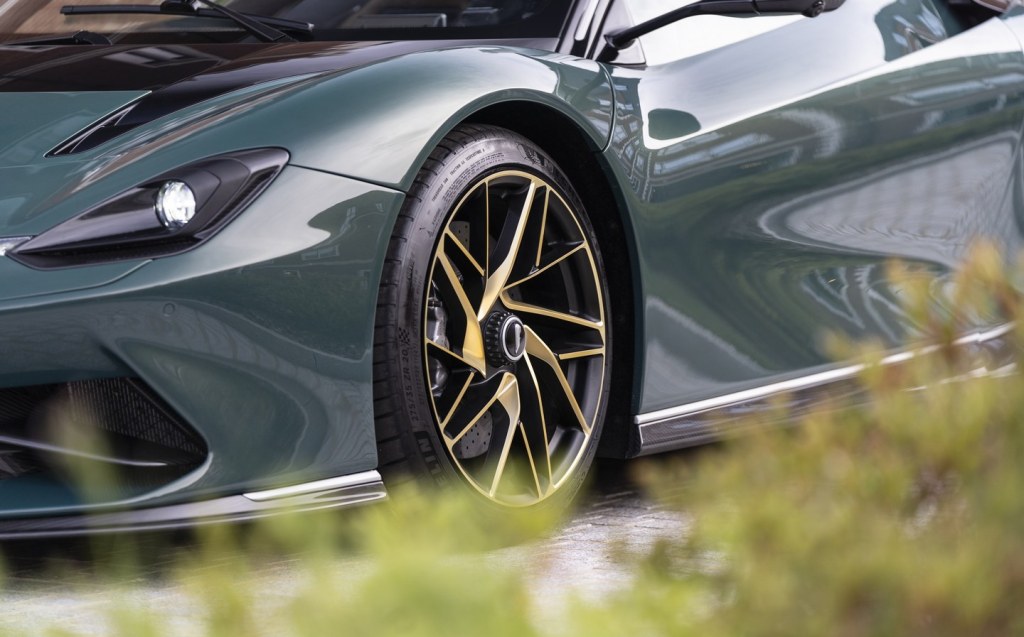
All that sounds great when you’re bragging to your mates, and that’s part of the appeal of owning a hypercar, of course, but experiencing the effects of those numbers is astonishing and uncomfortable in equal measure.
We’ve become used to electric cars’ instant acceleration, but this is something else. Even when you’re toddling around at everyday speeds, the car simply leaps forwards at the merest press of the accelerator pedal, leaving your internal organs pressed against the seat back. It isn’t especially pleasant.
However, you can dial the Battista back by selecting one of the more mundane driving modes that limit the power available and blunt the throttle response. But when Pura mode – Pininfarina’s idea of ‘normal’ – still offers 999bhp, the Battista is never going to feel slow. Just a dab of the accelerator produces ballistic performance.
But if you really want to impress/ terrify your friends, use the Furiosa mode that frees up all 1,874bhp.
If you do that, just remember the car will eat through electricity more rapidly. The official range is around 300 miles, but Pininfarina reckons something between 200 and 250 miles is a more realistic proposition, and our test drive suggests such a prediction isn’t outrageous, although the car’s ability to cover long distances will largely depend on whether the driver can resist the acceleration or not.
Ride and handling
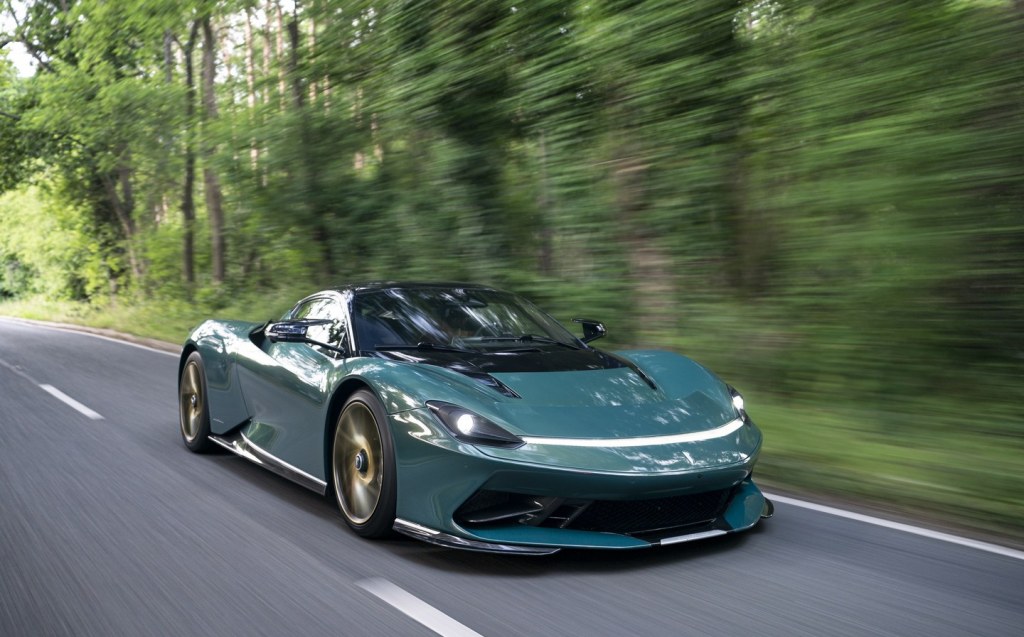
Would you want to drive long distances in the Battista, though? The figures clearly mark out the Battista as a serious hypercar but Pininfarina prefers to bill this as a grand tourer that can do a bit of everything. The company has tuned the car to be easy to drive around town and ballistic on a country road or a racetrack, and the results are largely successful.
In Calma mode, the most relaxed setting, the Battista doesn’t feel anything like as threatening as the power output might have you believe. In fact, it’s a bit like driving any other electric car; it’s just a bit lower and quite a lot wider.
Visibility isn’t brilliant — the rear window is tiny, and the other windows aren’t huge either, so it can feel a bit like driving around in a low-slung post box — and our left-hand-drive test car didn’t make life easy at some of Surrey’s tighter junctions, but the camera-based rear-view ‘mirror’ works very well.
Nor was it particularly comfortable. Even in its softest settings, the ride is quite firm, and you can feel the strength and rigidity of that monocoque. And although a ground-hugging hypercar is always going to feel stiff, the Battista is only just about tolerable on Britain’s uneven asphalt.
Pop it into the more aggressive modes and the suspension gets even stiffer, making the ride borderline unacceptable – particularly over any great distance.
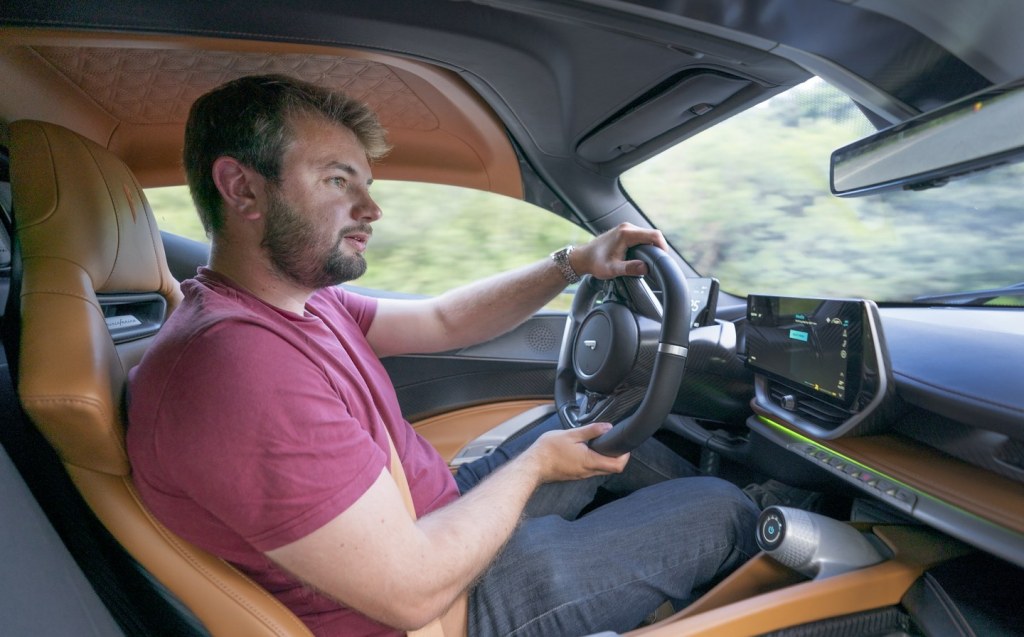
A lack of soundproofing and isolation is also immediately apparent. The Battista doesn’t protect its driver from the mechanical operation, preferring to let you hear the clunks and clonks as the motors, gearboxes and suspension go about their business.
And then there’s the motor noise, which is artificially created and spoon-fed to the driver via the Naim speaker system. The sound is decidedly odd, ranging from a futuristic throb at low speeds to a jet-like howl at higher speeds. It’s intriguing for a little while, but it’ll be turned off eventually.
Regardless, driving the Battista is fairly easy, and driving it quickly is an absolute revelation. With the stiff ride and light but incredibly responsive steering, as well as a dismissive attitude to soundproofing, the Battista feels like a lightweight sports car. Which is why we were stunned to learn it weighs more than two tonnes.
It hides that bulk brilliantly, with the low centre of gravity allowing extraordinarily little roll in corners and the seemingly infinite grip permitting rapid responses to steering inputs and equally rapid cornering speeds. We’ve yet to try the Battista on a track but it must be unbelievable.
Pricing and on-sale date
Pininfarina is already taking orders for the Battista and the car has generated plenty of interest. But while Pininfarina prides itself on being open, approachable and laid-back, the company admits those who have to ask about the price of a Battista probably can’t afford one.
In the UK, one of these things will set you back £2 million plus tax, and personalisation options allow customers to spend well in excess of £3 million to get the car they want.
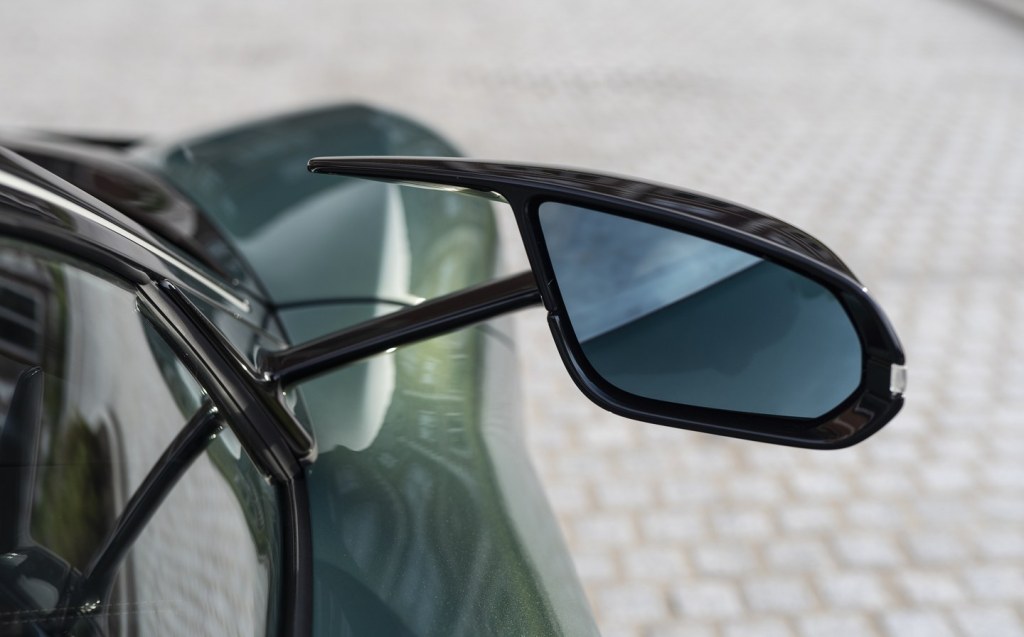
If you do have that kind of money hiding down the back of the sofa or you recently won the lottery, Pininfarina currently has dealers in London and the Midlands who would be delighted to help you specify your vehicle.
Verdict: Pininfarina Battista review
Anyone who thought electric cars were necessarily soulless clearly hasn’t driven the Battista. It’s gorgeous to look at and the way it drives backs up the design.
But most of the customers buying such a thing aren’t really interested in driving it very much. They want a collector’s item to show off on high days and holidays. They want something beautiful and exclusive, and the Battista delivers that in spades. It just so happens to be a very capable sports car, too.
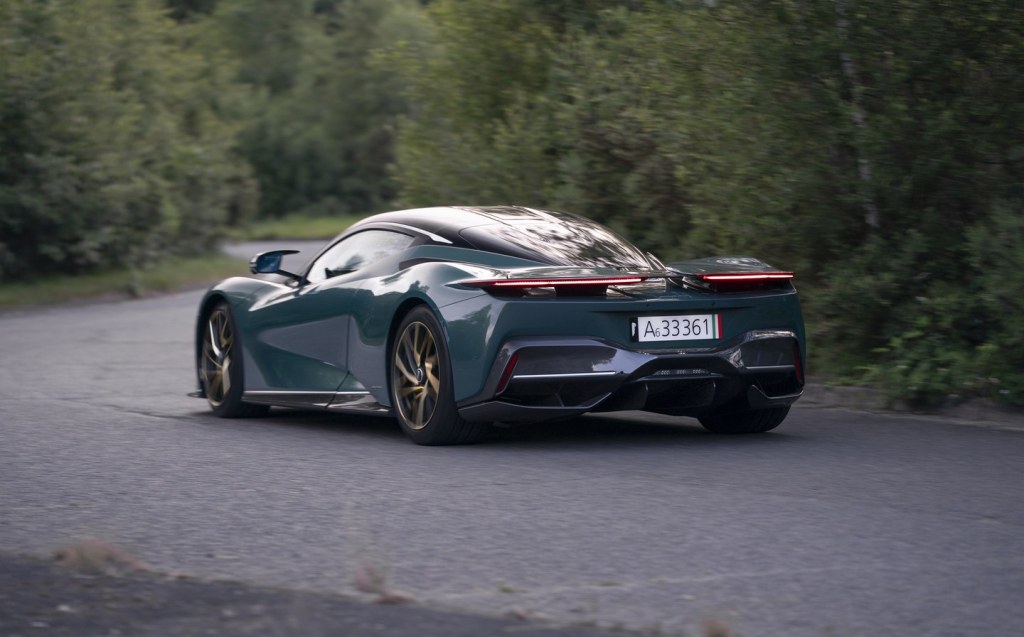
Whether that represents value is all down to you. Those with enormous garages and even more enormous bank balances won’t mind the outlay so much, but those who want a beautiful, high-performance car to drive and enjoy will find similarly capable cars for far less money.
Related articles
- After reading our review of the Pininfarina Battista, you might like to read Will Dron’s review of the McLaren Artura hybrid
- Did you know that Bugatti and Rimac have joined forces?
- Check out our five best supercars to buy in 2022
Latest articles
- Best-selling cars 2024: The UK’s most popular models
- New Volkswagen California camper based on car underpinnings and available as a hybrid
- F1 2024 calendar and race reports: What time the next grand prix starts and what happened in the previous rounds
- Sci-fi inspired Ferrari 12Cilindri replaces 812 Superfast, powered by 819bhp unassisted V12 engine (video)
- New Renault Symbioz adds to French carmaker’s fresh crossover SUV assault
- Red Bull confirms Adrian Newey’s departure, but where next for the F1 designer?
- Lotus shows off its work on British Cycling’s Paris Olympics bicycle
- New Aston Martin Vanquish to get V12 engine with 824bhp
- Cupra updates Leon and Formentor with sharp styling and longer-range hybrids


